
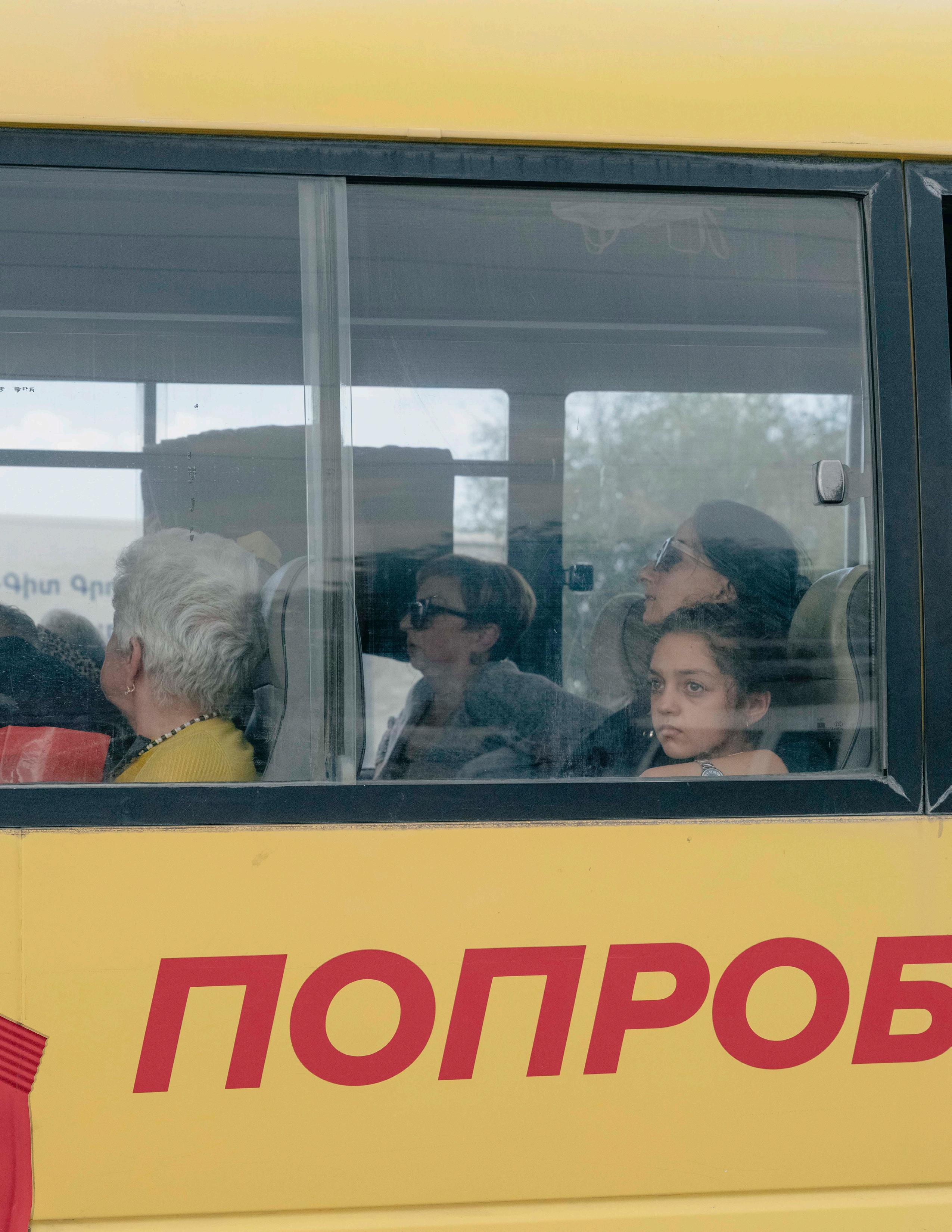



Dear Readers,
For our second issue, we explore how politics and power shape the lives of individuals and communities – from the erosion of democratic norms to the struggle for truth, freedom, and belonging. We are excited to share stories that reveal the human cost of repression, the courage it takes to speak freely, and the fragile bonds that hold communities together in times of fracture.
Editors-in-Chief
Eliza Daunt
Nicole Chen
MANAGING BOARD
Managing Editors
Hanna Klingbeil Canale
Rory Schoenberger
EDITORIAL BOARD
Associate Editors
Aubrie Williams
Ben Szovati Coulter
Conor Webb
Kiran Yeh
Logan Day-Richter
Natalia Armas Perez
Nicole Manning
Natalie Miller
Theo Sotoodehnia
Phoenix Boggs
Lucy Dreier
Sheena Bakare
Jaeha Jang
Contributing Editors
Beatrice Formenton
Mattie Epstein
CREATIVE TEAM
Creative Director
Ainslee Garcia
Design Editors
Katerina Matta
Ruth Gulilat
Jun Hung
BOARD OF ADVISERS
John Lewis Gaddis
Publisher
Suren Clark
Contributing Writers
Avni Kaur Chadha
Baala Shakya
Brandon Gerosa
Caitlin LaFerney
Chantal Eulenstein
Eleanor Belinfanti
Gagnado Diedhiou
Hallie Black
Julia Clauson
Kushan Mahesh
Kika Dunayevich
Katerina Matta
Lily Scheckner
Natalia Ramos
Taia Menefee
OPERATIONS BOARD
External Affairs Director
Conor Webb
Communications Director
Abyssinia Haile
Business Director
Sheena Bakare
Robert A. Lovett Professor of Military and Naval History, Yale University
Ian Shapiro
Henry R. Luce Director of the MacMillan Center for International and Area Studies at Yale
Mike Pearson
Features Editor, Toledo Blade
Gideon Rose
Former Editor-in-Chief of Foreign Affairs
John Stoehr
Editor and Publisher, The Editorial Board
Brandon Gerosa begins with a powerful look at political violence in the United States, showing how fear and polarization are silencing free expression and eroding public discourse. Eleanor Belinfanti traces the rise of the Make America Healthy Again movement, revealing how wellness, skepticism, and distrust have turned public health into a political battleground.
Our cover story by Kushan Mahesh follows the 2023 mass exodus from Nagorno-Karabakh (Artsakh), centering the human stories of displacement and identity amid the region’s shifting geopolitics. Katerina Matta charts Zohran Mamdani’s viral, community-driven campaign, demonstrating how youth engagement, accessibility, and the perception of authenticity can redefine modern politics.
Chantal de Macedo Eulenstein examines Brazil’s conviction of Jair Bolsonaro, hailed as a triumph for democracy yet shadowed by questions of due process, revealing a system willing to bend the rule of law in the name of justice. Eliza Daunt interviews Platon, the portraitist who has looked into the eyes of the world’s most powerful and those who resist them. From Trump’s showmanship to the resolve of human-rights defenders, he unpacks what power looks like up close.
Hanna Klingbeil Canale’s photojournalism piece brings us to Temascaltepec, Mexico, where free flight has transformed the rural community of El Peñón into a vibrant hub of resilience, culture, tourism, and opportunity.
Finally, Lily Scheckner’s podcast takes us inside the Texas House, where Democrats fled the state to block a gerrymandering vote, illuminating the high-stakes struggle over representation and the future of American democracy. Listen to the full episode on The Politic website.
At a time when truth is contested and trust is eroding, these pieces affirm that journalism’s essential purpose is to hold power to account, give voice to the unheard, and keep the public conversation alive.
Sincerely,
The Editorial Board
Mamdani
magazine is published by
College students, and Yale University is not responsible for its contents. The opinions expressed by the contributors to The Politic do not necessarily reflect those of its staff or advertisers.
BY BRANDON GEROSA
“I
don’t think there’s been where people were more openly afraid to ex press themselves.” Jimmy Hatch, a former Navy SEAL, reflects. “It breaks my heart.”
This remark is all the more striking coming from some one who has seen unimaginable violence in Iraq, Bosnia, and Afghanistan from more than 150 small-scale, offensive, and routine missions. Hatch’s perspective is haunting: The fear of speaking at home, he suggests, is beginning to mirror the senti ments seen in autocracies abroad.
The United States has a long history of violent behavior driven by political intent. Abraham Lin coln’s arbitrary suspension of habeas corpus during the Civil War, the January 6th insurrection, and countless assassinations of prominent political figures have all been embedded into the DNA of this country.
In response to political violence, the press has relentlessly covered, commented on, and critiqued political administrations for their wrongdoings. Upholding the journalistic principle of keeping officials in power accountable, the media is meant to remain independent of governmental control. Yet, as a resurgence of this violence takes root in the U.S., freedom of the press is under attack — both by state actors, donors, and journalists themselves.
Political violence has become a buzzword across news outlets, but what does it actually mean? Beverly Gage, a Pulitzer Prize-winning historian at Yale University, defines political violence simply as “violence that has a political intent.” Po-

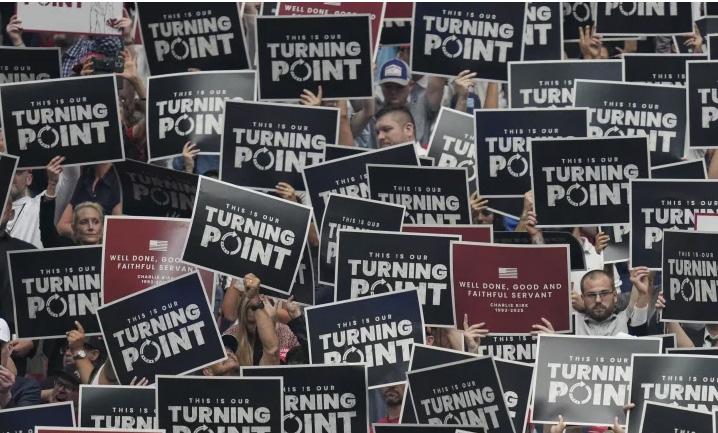

lence, in this context, is not chosen; it is coerced.
This chilling effect does not exist in a vacuum; rather, it is deeply intertwined with broader societal polarization. Graeme Wood, a lecturer in Yale’s Political Science department and a staff writer at The Atlantic, observes that polarization isn’t inherently bad. “What’s bad is polarization in isolation from the other pole,” Wood states.
Division becomes dangerous not because people disagree, but because they no longer engage with disagreement. Instead of confronting opposing claims, they caricature them. In such an environment, retribution becomes not only easier and tolerated, but rationalized. Why debate an opponent when you can delegitimize, and even dehumanize, them? Once your opponent is no longer seen as legitimate, silencing them feels less like censorship and more like restorative justice.
The tactic of delegitimizing opponents reflects a deeper problem. Hatch argues that political debate in the United States has been overtaken by a destructive fervor. “The new religion is politics. We’ve become a lot more secular, and politics has given us this fervor, the passion that religion used to,” he said. The lengths to which individuals go to defend their opinions have shifted from civic duty to existential struggle. They perceive the threat not only to themselves, but also to the larger community with which they identify through shared ideological beliefs.
Social media has facilitated the proliferation of identity-based communities like this. One of the clearest examples is the modern manosphere — a network of creators online that unite over male grievance, blaming feminism and social progress for the issues men are currently facing. The shared victimhood has become ingrained in one’s identity, seeing struggles with dating and job acqui-
sition as a form of political betrayal. What begins as alienation shifts into mobilization, as young men come to see themselves not just as members of a community, but as players in a larger campaign to reclaim power. This movement then manifests itself into ideological tribalism.
Hatch warns that this ideological tribalism becomes particularly dangerous when leadership engages in retribution against opposition. Having witnessed societal collapse firsthand during his deployments abroad, he sees a familiar pattern: rhetoric that demonizes opponents and fosters isolation fractures social cohesion. “If we can learn to see one another’s humanity, our own humanity, in one another, that will help. But the rhetoric [that political leaders] use is such that we’re moving away from that type of thinking as a culture, as a society.” Hatch says. “And I think that’s dangerous.”
“Bosnia is a great example. Everybody circled around their little tribe…the Muslims, the Serbs, the Croats, [and] they just started killing each other,” Hatch describes. While Bosnia and the U.S. have apparent differences — one a fragile post-communist state shattered by ethnic nationalism and civil war, the other a long-standing democracy with robust institutions — Hatch reveals that the same emotional mechanisms exist. People stopped recognizing the opposition as humans with opinions, but merely as political agents with destructive values.
When President Trump, speaking at Charlie Kirk’s memorial, declared that he

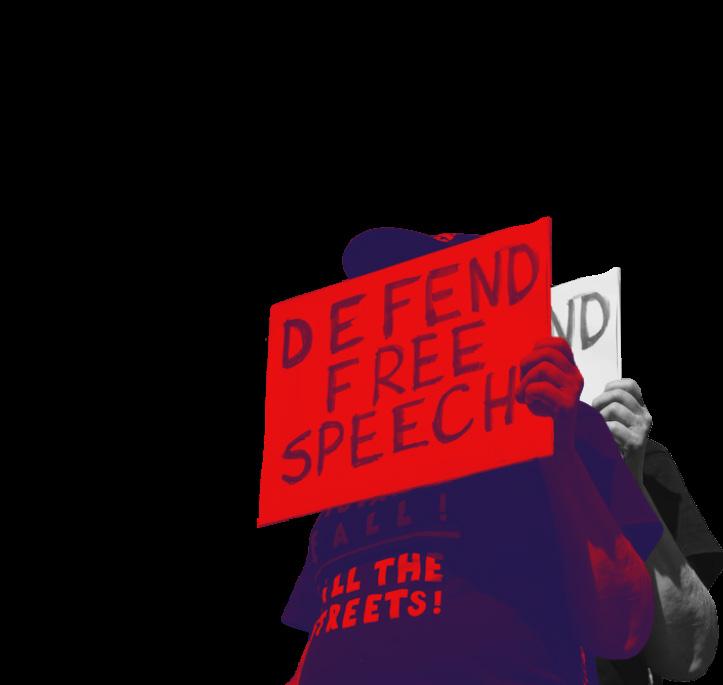
“hates his opponents” and does not “wish them the best,” he gave permission for ordinary citizens to see political rivals not as fellow Americans, but as non-human threats. Once leaders normalize punishment against opponents, citizens gravitate towards political extremes and fortify their beliefs. Public discourse halts, intolerance rises, and political retribution becomes attempted ideological purification.
As Anne Quaranto, a philosophy lecturer at Yale who studies propaganda and democracy, emphasizes, free expression is not just the right to speak — it also relies on the willingness of others to listen. Speech is a relationship, she explains, and when tribalism creates intolerant echo-chambers, the effects of political retribution extend beyond isolated acts of hostility: they amplify fear and make meaningful dialogue nearly impossible.
The chilling effect is not confined to just one country –– it has become a global phenomenon. In light of its pervasiveness, it is crucial to distinguish between censorship and retribution. Conflating the two risks harmful hyperbolic behavior, where exaggeration primes numbness and dulls public sensitivity.
“When you shoot a gun, you shoot this projectile out of the end of the gun, but there’s an energy that comes back into you, and that’s the recoil.”
Investigative journalist Matthew Cole of The Intercept draws a clear distinction between censorship and political retribution when he compares the experiences of reporters abroad with those in the United States. Outside of the U.S., journalists often face direct violence simply for telling the truth. In 2024 alone, the Committee to Protect Journalists reported at least 124 journalists and media workers killed. In warzones and autocracies, Cole recalls, “the Taliban were willing to kidnap journalists” to prevent critical reporting. These preemptive efforts to suppress information are not retribution. They are censorship in its purest form.
istration was “small and mostly symbolic” due to its limited ability to prevent reporting on the White House. Still, he does express his concerns about the broader implications of these acts of retribution.
“I am worried about newspapers, magazines, and prints because of the self-censorship,” Cole says. Over time, repeated retribution can push journalists into self-censorship, narrowing the scope of public debate. This raises the unsettling question: Is quiet coercion becoming the 21st-century strategy for controlling political information?
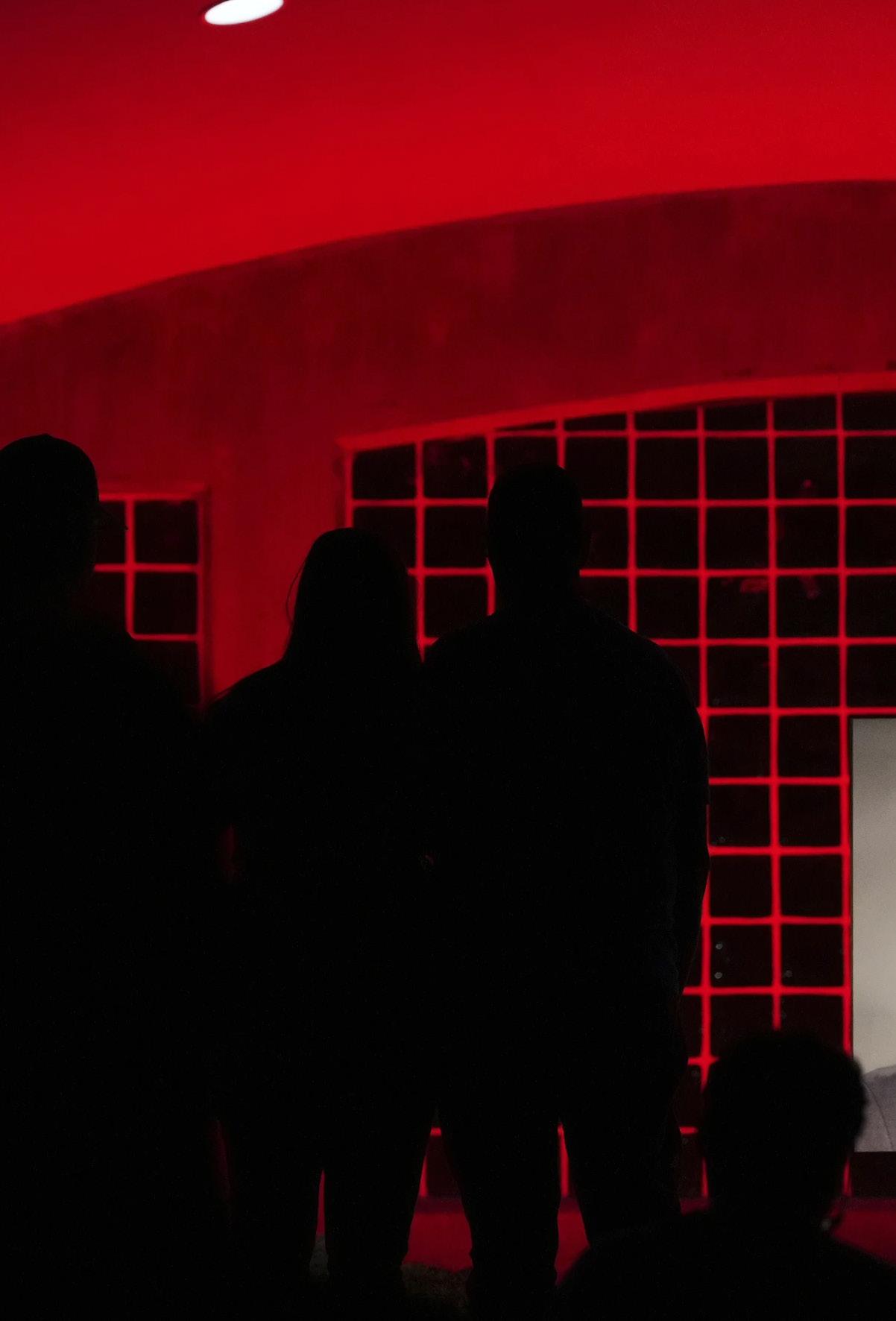
In contrast, the U.S. presents a subtler, yet still inimical, form of pressure. Cole cites the example of late-night host Jimmy Kimmel briefly disappearing from the air after commenting on Charlie Kirk’s assassination. “It wasn’t censorship,” he clarifies. “It was retribution.” Professional consequences like losing access to advertisers or platforms may not block speech directly, but they make speaking costly.
Cole recalls when the Trump administration restriction of the Associated Press’s credentials for access to the White House briefing room after the outlet declined to use the preferred term “Gulf of America.” According to Cole, this action from the Trump admin-
Structural factors in U.S. media amplify this dynamic. Broadcast networks, for instance, operate under licensing and regulatory constraints, meaning risky reporting could jeopardize their ability to air. “It’s a legitimate concern,” Cole notes, forcing preemptive caution. Editors and reporters may avoid controversial topics, sanitizing coverage to minimize perceived risk. Following Kirk’s assassination, he observed newsrooms “bending to not offend,” consciously narrowing coverage of inflammatory rhetoric to avoid retribution. By connecting domestic patterns to global examples, Cole highlights a continuum of threats to free expression, from direct
violence abroad to symbolic retribution and, ultimately, self-censorship. While the First Amendment of the Constitution prevents outright censorship, normalized retribution can quietly chill discourse, establish ideological extremes, and create conditions where formal censorship becomes more likely. Understanding the distinction between retribution and censorship, Cole suggests, is not merely semantic: it is essential to diagnosing the subtle pressures undermining democratic norms without unnecessarily amplifying fear.
ity of violence within the U.S. We’ve spent countless years trying to uphold the global standing of democracy and the protections of freedoms, but in doing so, have internalized that very violence we aimed to contain elsewhere.
Hatch’s observations about America’s familiarity with violence abroad highlight a broader truth: political violence leaves marks not just on the battlefield, but on the very fabric of domestic society. “We are the biggest weapons distributor in the world. I mean, those kind[s] of things have a recoil. When you shoot a gun, you shoot this projectile out of the end of the gun, but there’s an energy that comes back into you, and that’s the recoil,” he states.
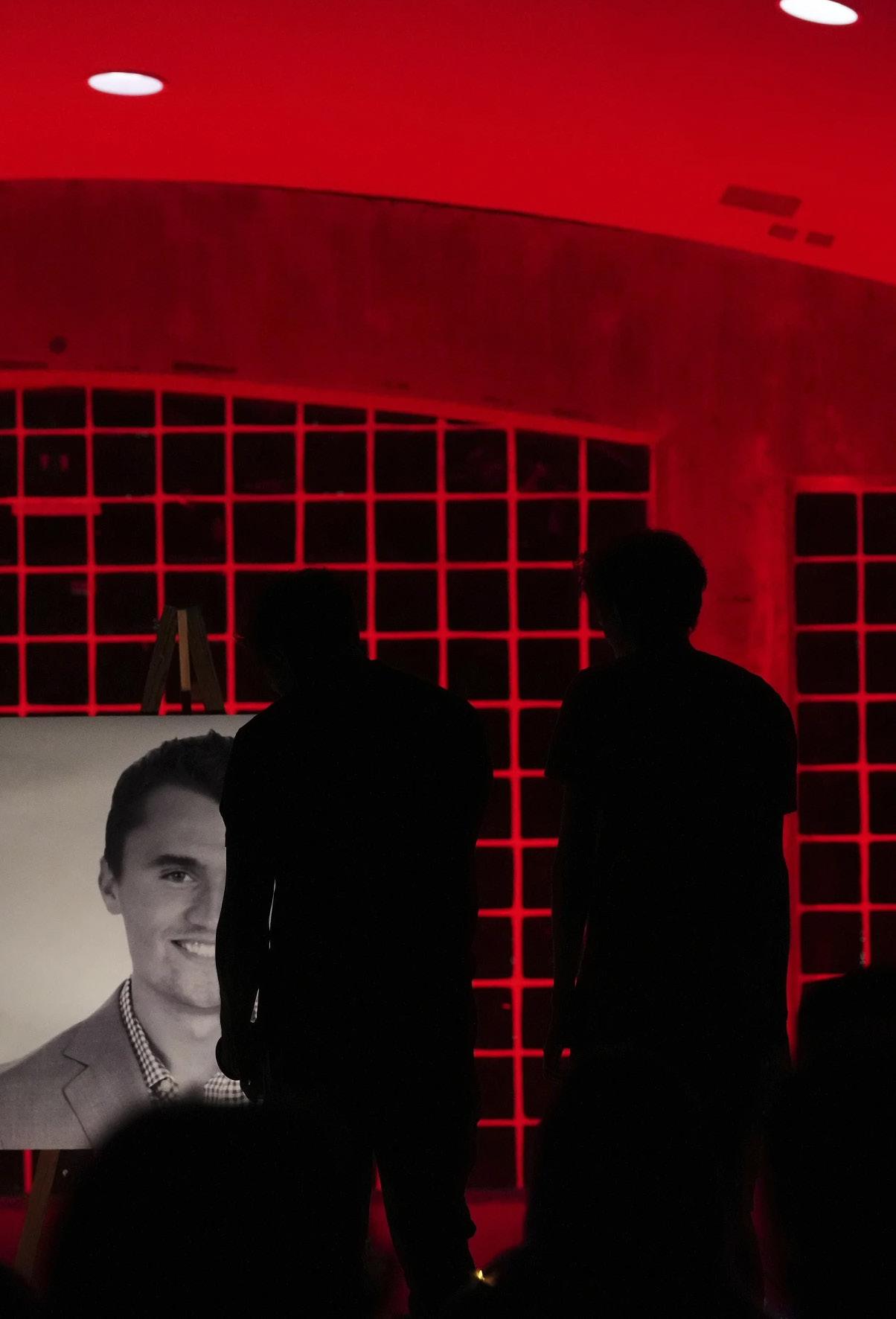
A
vigil after Charlie Kirk’s assassination.
Cole’s framework demonstrates that threats to free expression can escalate quietly, even in democracies with constitutional protections. Hatch situates this phenomenon within a larger global dynamic: the U.S. has, over decades, exported a culture of violence abroad, and the effects of that export are eventually seen back home.
“Look, Iraq’s gonna change America. America’s gonna change Iraq. You will learn the culture of death. And I think that we’ve kind of stepped into that, because that’s been our…export, really, hasn’t it?” Hatch states, reflecting the new, normalized real-
Hatch emphasizes that the repercussions of exported violence are not abstract, but rather manifest as a kind of societal “recoil.” The familiarity with lethal force, the normalization of destruction, and the perception that violence can effect change all feed back into American society. “Our society, although very well protected, has become very accustomed to violence and not really having to pay the consequences. And that’s a pretty big problem,” Hatch notes.
The normalization of aggression, coupled with fear-driven silence, can shape how citizens engage with dissent and debate. This is not the first time the United States has faced such pressures, and it won’t be the last. These episodes, while frightening and disruptive, ultimately prompted reflection, reform, and the strengthening of civil liberties.
Gage recalls from her research on the Wall Street Bombing of 1920, that the “whole period in the late 19th and early 20th century, when acts of bombing and assassination and violent conflicts were incredibly prominent” that the same period “gave birth to the world of civil liberties and the ACLU in reaction to some of the crackdowns.” This pattern offers perspective on today’s
“You can’t kill an idea.”
climate of polarization and retribution.
Today, the pressure to stay silent in the U.S. comes from something far more obscure than overt legal repercussions. The imposed silence on citizens and journalists has already taken its course — several potential interviewees for this piece declined due to the inability of tying their name to a work that discusses retribution in light of Charlie Kirk’s assassination. Even among those who agreed to be interviewed, it was apparent that the pervasiveness of the “chilling effect” was collectively felt.
Despite the quiet, Jimmy Hatch reminds us that “you can’t kill an idea.” History shows that ideas endure when people resist the instinct to withdraw, choose dialogue over silence, and embrace shared humanity over demonization. In a time when political fear tempts many to retreat to a convenient stillness, the survival of democracy depends on our willingness to speak, listen, and challenge one another. Let your ideas flourish, and find a way to speak your truth.

BY ELEANOR BELEFANTI
A typical day in the life of Katlyn Bevington includes waking up, doing a devotional, homeschooling her kids, and putting them to bed. She seems like a regular homeschooling mom. She is anything but.
Katlyn, also known as @katie.bevington, has over 100,000 followers on TikTok, 92,000 followers on Instagram, and 216,000 followers on Facebook. A self-professed “crunchy mom,” who engages in natural holistic parenting, her interest in medicine started when she was twelve. “My grandfather was in a really bad car accident. It was incredible, it was near-death. I watched these nurses and doctors put him back together, and I thought that was super inspiring.”
Her dreams of becoming a doctor were cut short when she found out she was pregnant with her first child at 19. She pivoted to nursing and became a Certified Nursing Assistant (CNA). She had aspired for a career in medicine her entire life, but quickly began to realize that “most things weren’t as they seemed.” Katlyn claims she was forced to “go around and push vaccines to people and it didn’t make sense.” She says this is the moment when “God changed my life and opened my eyes.” This led her to quit nursing and pursue alternative health practices.
Katlyn started small, by cleansing her household products to fit her new ideals. “At first, it was the big things, like laundry detergent, deodorant, things like that. And then I really started focusing on getting more quality food in the house.” Katlyn went down a rabbit hole about chemicals and unsafe food practices. “After all that, you kind of have a guaranteed awakening.”
While Katlyn’s alternative health journey did not have political origins, her awakening led her to the Make America Healthy Again movement, which inextricably links politics and public health.
In 2024, Robert F. Kennedy Jr. coined the term “MAHA” during his presidential campaign as an independent. In August, 2024, Kennedy suspended his bid for president, and endorsed Donald Trump’s campaign, permanently politicizing MAHA by tying it with the Trump administration.
“I love the entirety of Make America Healthy Again,” Katlyn said, emphasizing that she values and desires honesty from the government and firmly believes that other people want the same. “We want transparency.” As a mother of two, Katlyn falls into the category of concerned parents drawn to the MAHA movement for its promises to keep their children safe. This is the most vocal segment of the MAHA movement, with large online communities such as “The MAHA Moms Coalition” and “Mama Knows All.” But not all MAHA sup-
“I love the entirety of the Make America Healthy Again Campaign.”
porters have the same story.
Ava Noe, also known as @cleanlivingwithava, is a senior in high school. She is busy thinking about her personal statement, college tours, and creating content for her 26.2k followers on Instagram. When Ava was thirteen, she “out of nowhere, developed chronic digestive issues.” Ava claimed that her doctors were confused and could not provide a concrete explanation or solution. According to Ava, her condition got so bad that she thought, “I’m not living like this for the rest of my life.” So she turned away from Western medicine and towards changing her diet and lifestyle. This kicked off her journey into alternative health.
Struggling with her condition, Ava decided to start posting on social media to share her story with others. She did not “start with the intention of wanting to have a big platform.” She simply “wanted other teenagers to see [her] as an example and come for advice.”
Ava’s concerns led her to the MAHA movement. “I really appreciate everything the MAHA movement is doing, because I feel like it was something that was just brushed off for so long.”
Katlyn and Ava are not the typical portrait of MAHA supporters. Despite their different backgrounds and journeys, Katlyn and Ava’s reasons for supporting MAHA are remarkably similar: both believe the MAHA movement is uprooting established health practices and doing America a service that should have been done years ago.
Katlyn and Ava are not the influencers being invited to the White House. They do not have large sponsorships or nationally popular podcasts. But they are MAHA’s heartbeat—ordinary Americans attempting to build communities around their dissatisfaction with public health. Their appeal lies in relatability: they are parents, students, and patients who have been disillusioned by the American healthcare system.
Katlyn’s experience with medicine is not limited to her work as a CNA. She is generally suspicious of doctors and critical of the way they treat their patients. “I kept seeing things I was confused about… doctors lying to patients, mis-
construing information so the patient wasn’t fully informed of what they were going to endure.” The most poignant example for Katlyn is “someone getting an appendix out and being forced to give them more vaccines…and I would ask my instructor and she’s like ‘that’s just the way it is’.”
Dr. Aimée Shunney, a licensed naturopathic doctor, attributes Katlyn’s perspective to the 1980s and 1990s when the United States started managed care—when healthcare became increasingly organized around insurance networks. She discusses how “these really big corporate conglomerates take over health care,” which created “a situation where your average person is getting an extremely limited amount of time with their doctor.”
The pivot towards managed care in the 1980s created a shift in doctor-patient relationships and American trust in healthcare.
According to a

health and food substitutes for teenagers. But both have since engaged with increasingly political topics: vaccines, food safety, pharmaceutical skepticism, government overreach, and bodily autonomy.
Online wellness culture was not always political. However, as with most things online, wellness culture began to reflect an increasingly polarized political climate.
Molly Ostrander, registered Dietitian and founder of Nutrition For People, believes that a large part of online health culture is based on sensationalism. “As someone who posts online regularly, I understand that if I say ‘here are three things I put in my smoothie everyday to make it a natural multivitamin’ five people are going to like it. If I say ‘here are three things I would never put in my smoothie because they’re poison’ 100 people are going to like it.” Sensationalism attracts attention, and in the digital age, attention is a form of currency.

poll conducted by
The Harris Poll, “trust in people running medicine,” has dropped by 23% since 1973. Healthcare became a consumer good, leading to a loss of humanity in medicine, and a widespread lack of trust between providers and patients. This decades-long situation led to understandable discontent for Americans who felt as though their health needs were not being met or listened to.
Dr. Shunney’s theory is that “the explosion of the internet” meant that people who felt that they could not have a relationship with their doctors, could have “a relationship with a wellness or doctor influencer.” They invest their feelings and time into these influencers because they think, “they see me, they hear me…it’s very attractive, seductive even.”
Katlyn originally focused on food substitutes and non-toxic products for children, while Ava focused on gut
According to Ostrander, online audiences gravitate towards “easy and understandable soundbites”. Nutrition becoming an increasingly popular topic online means that what was once a small niche became competitive, forcing creators to drift towards the extreme.
Emily Oster, economist and founder of ParentData, agrees with that sentiment. Oster, in an email to The Politic, wrote that part of the reason MAHA is so successful is that “the sound bites are very easy to digest. ‘No food dyes’ is a message that, on face value, sounds very good.” Online segments of the MAHA movement thrive on messages that are universally agreeable at first. Gradually, the content becomes more political.
Katlyn does not believe she engages in sensationalism regarding her content. “I will never post clickbait or anything like that…I don’t even partner with brands that don’t align with my mor - als,” says Katlyn. While she has posted videos discussing the manipulation
of the weather and praising the anti-vaccine movement, to her audience, this is not an act of sensationalism. Indeed, her videos resonate for a reason other than clickbait-y soundbites; they resonate because other people have perceived the same problems for decades.
Dissatisfaction with the government has been a long-standing issue and is often cited as one of the reasons why Trump’s presidential platform was so appealing in 2016.
Regarding public health, during his first term, the Trump administration’s focus on American health was practically negligible. According to Former Secretary of Health and Human Services under Obama, Kathleen Sebelius, Trump’s attempts to repeal Obamacare were the “biggest interest that Trump showed in health policy.”
A transformation came with the COVID-19 pandemic. “I could not believe what I was hearing…I watched while the President of the United States actively gave false information to the American people,” said Sebelius. “During COVID, Donald Trump took public health in a very different direction and began to debate the scientists. But more than that, he began to criticize decisions made by Democratic governors…so
“If people would just unleash the tie to Donald Trump, and release the ties to the blue as well, there would be more of an understanding, but people just get so hot before understanding.”
Republican affiliation, she believes that MAHA has the potential to exist outside of political parties.
While both Katlyn and Sebelius agree that President Trump is not hands on with RFK Jr. and public health, Katlyn sees this as an opportunity for public health to become bipartisan, whereas Sebelius sees President Trump’s distance from public health as evidence of the administration vying for political gain.
“The President doesn’t have any more interest in health policy than he ever had, he just had an interest in courting somebody named Kennedy and having him flip from a Democrat to a Republican,” said Sebelius.
President Trump’s distance from MAHA poses a large threat to public health policy. “The most salient sentence that Donald Trump has ever said about Bobby Kennedy is ‘I’m going to let him go wild on health’,” according to Sebelius.

public health became a political partisan football.”
This political shift deepened even further with the nomination and election of RFK Jr. to Secretary of Health and Human Services. His nomination was controversial not only because of his family’s longstanding political legacy, but also because of his history as a vocal anti-vaxxer and former environmental lawyer without a background in public health. Many saw this as a political ploy by the Trump administration to leverage the Kennedy name and gain center-right moderate support.
Katlyn has a different opinion. “If people would just unleash the tie to Donald Trump, and release the ties to the blue as well, there would be more of an understanding, but people just get so hot before understanding.”
MAHA, for her, is mostly apolitical. “The politics are relevant but irrelevant at the same time.” She does not view RFK Jr. and the MAHA movement as the Trump administration’s attempt to politicize public health. MAHA is simply an attempt to improve public health, and despite her own
Katlyn and Ava do have platforms, but in every other way, they are simply ordinary Americans trying to navigate their health. Their support for MAHA has not wavered since the Trump administration and RFK Jr. came into power, and they have continued to post about MAHA since then. Their followers still comment on and like their content; they continue to have brand deals and audiences.
They are certainly not the architects of MAHA, nor are they its loudest voices. But their audiences feel that they are more accessible than doctors or experts. Their feelings are widely understood; they reflect frustration, but also a desire for autonomy of their own bodies and transparency from the government. There are lessons to be learned from Katlyn and Ava’s stories.
Katlyn argues that disrupting the status quo is the answer. It is the through-line for most of her ideas surrounding public health policy and her suspicion of the government as a whole. She believes she is not the only one. “Ultimately, I think that what the movement wants, what anyone would want, is safety.”
Katlyn and Ava’s journeys show that MAHA’s appeal is not just about politics—it is about trust. Trust in healthcare, trust that the government wants to keep Americans safe. MAHA’s rise to the mainstream is a response to a growing number of Americans who feel unheard and underserved by the very systems meant to protect them. MAHA taps into these feelings by offering an alternative—one that for Katlyn and Ava, is an alternative worth fighting for.
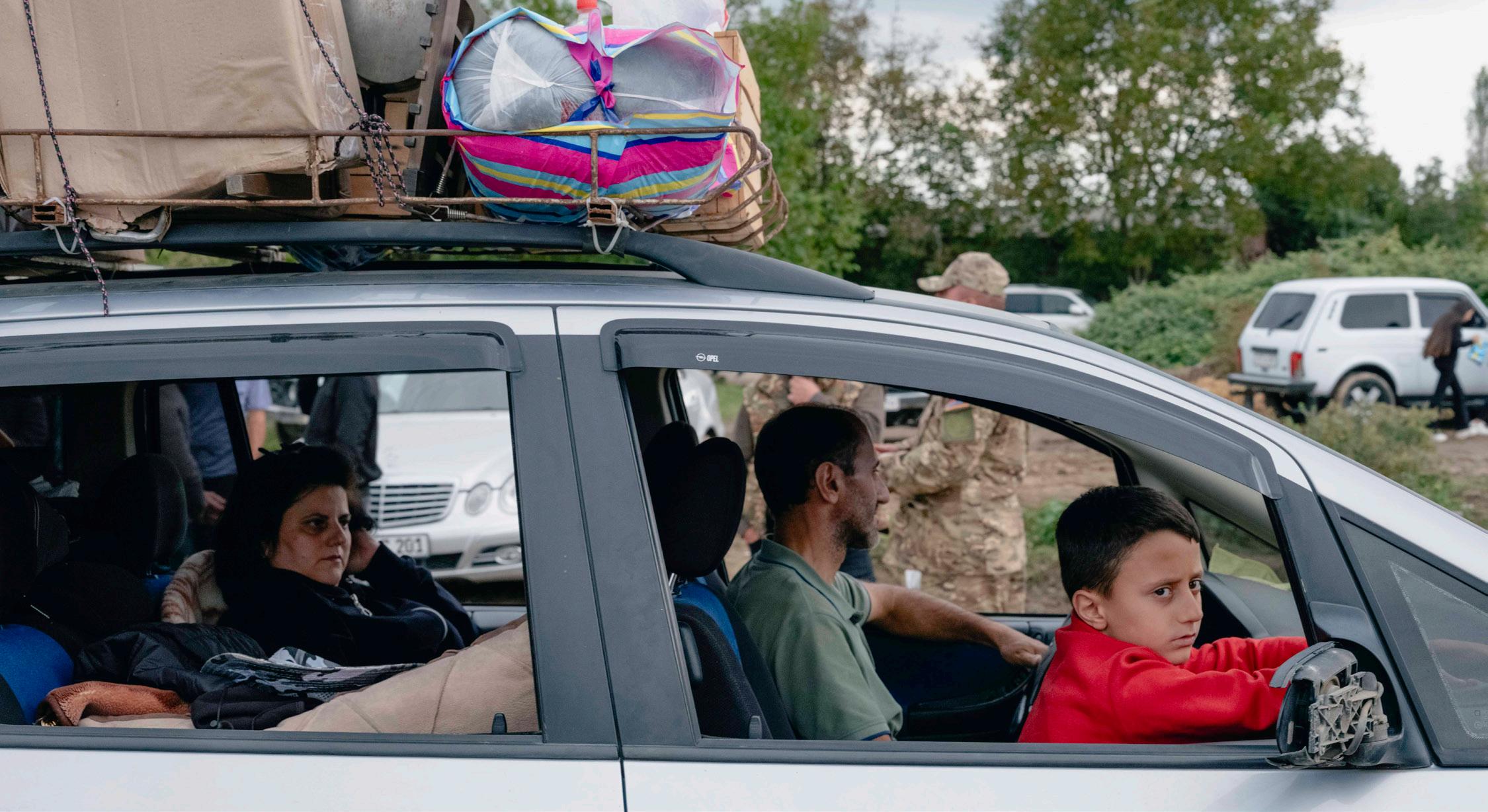
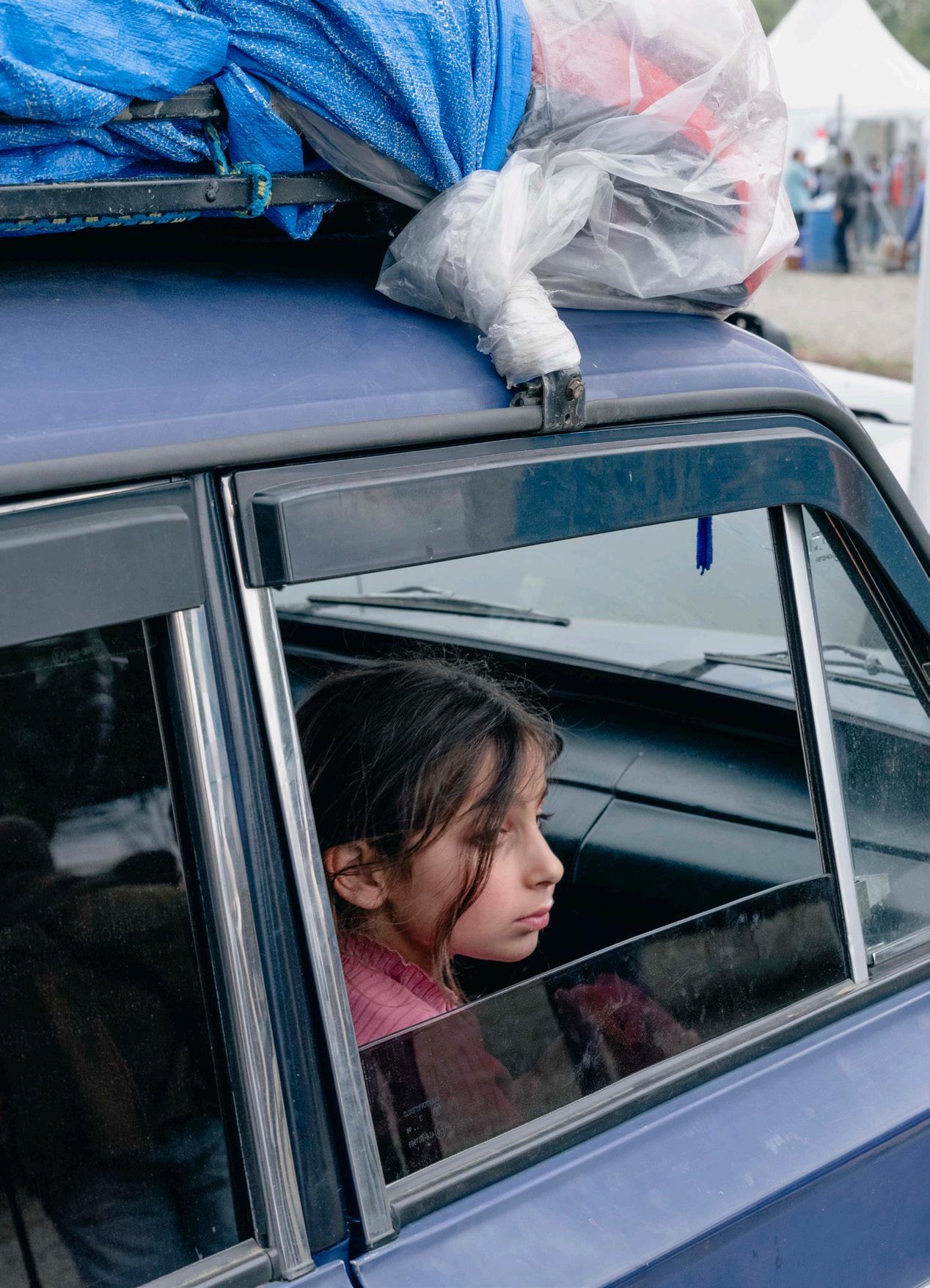
BY KUSHAN MAHESH
What should have been a two-hour drive stretched into twenty. Families pressed their heads against their car windows, watching their homeland slip further away as they fled Artsakh for Armenia. The air smelled of gasoline and smoke, thick enough to cling to the clothes, belongings, and livelihoods hastily strapped onto the tops of cars. The road ahead was uncertain, but the road back was impassable, sealed both by shelling and the knowledge that what was left behind would never be the same.
Nina Shahverdyan was in that line of cars. Born and raised in Stepanakert—the capital of Artsakh, known internationally as Nagorno-Karabakh––she lived through the 2020 war and worked as a teacher in rural villages across the region. She saw firsthand the fragility of home. “It was a mixture of being afraid… and not knowing what Azerbaijan would do to us next,” Nina told The Politic, speaking on border firefights and blockades that punctuated her everyday life.
On September 19th, 2023, the “first bombs started being dropped on Stepanakert.” Nina and her family initially dismissed them as isolated skirmishes, but when Azerbaijan continued to shell the city and the Russians opened the passage, she knew this time was not like the others. “Nobody took it seriously, until it became serious.”
Leaving Stepanakert, Nina felt a sense of disbelief and hopelessness more than fear, “You live there without ever expecting that you’ll lose it. You have your house and in the next hour you don’t. You leave and don’t know what kind of future you’re going to have… Deprived of your house, your homeland, the life you built—you cannot do anything against it because you’re so weak. You’re so weak you can’t even eat whatever you have to eat. Then there are people that died and their bodies are still there.”
Nina recalled the humiliation more than any-
thing—the sense of being stripped of dignity and being powerless to fight back. For her, the pain was far more than the material devastation, but knowing her and others could do nothing as they watched their homeland disappear. Hours of waiting blurred together with images of burnt bodies amid a sense of unknown for both their immediate and far future. “Nobody could give you any promises, and if they do promise, you can’t believe it,” Nina said. “You need to save your family; it’s like an apocalypse and you have to escape.”
Rebecca Topakian, a French photojournalist, was on the ground during the evacuation of Artsakh, capturing stories of families fleeing their homes. Her photographs showed faces marked less by anger and more by sadness. Her camera caught the smaller tragedies that would never make international headlines. On the twenty-hour road, she met a family travelling with a girl no older than five. Her father had left with other men to fetch fuel when an explosion struck the area nearby—he never returned. Strangers took the girl in, assuming her father was dead.
The hospital in Goris, Rebecca recalled, was no less haunting. An unconscious old woman lay alone with no family, no name, no village, nothing anyone could identify. In the same ward lay a sick baby said to be from an orphanage. “Every story was heartbreaking,” Rebecca said, “some worse than others, but all bad.”
Rebecca spoke about the profound sadness she saw in people, especially in those who had experienced the wars in the past. “If you fight, and even if you lose, you’ve been fighting,” she said, talking to veterans of the 2020 conflict and even older veterans of the post-independence wars in the 90s. It was the loss of identity and of agency compounded by the fact that, this time,
“This is largely a result of colonial history,” he told The Politic, referring to the frozen conflicts that emerged after the dissolution of the USSR in the early 1990s. Both Armenia and Azerbaijan, he added, were unprepared for independence, their statehood and democratization distorted by war. With “Russia distracted” by Ukraine in the present day, Azerbaijan was able to exploit the power vacuum and assert dominance over Armenia.
The uneasy balance collapsed in 2020, when a six-week war ended with Azerbaijan defeating Armenian forces. A Russian-brokered peace deal stationed peacekeepers in Karabakh and the Lachin corridor (the only road to Armenia from Karabakh), but left the region vulnerable. In 2023, a blockade gave way to bombardment, and after Yerevan relinquished control, Armenians fled en masse as Karabakh was absorbed into Azerbaijan. The shock was not only in the loss itself, but both in the speed and finality of which a homeland was emptied.
The wars redefined both nations and their leaders. In Yerevan, Prime Minister Nikol Pashinyan, elected in the country’s first free and fair elections in May 2018, was recast as the subservient, weak leader who gave up Karabakh. In Baku, President Ilham Aliyev, long ruling under the shadow of his father’s legacy, emerged victorious, presenting the recovery of Karabakh as his crown jewel, legitimizing his dynastic rule.
“You live there without ever expecting that you’ll lose it. You have your house and in the next hour you don’t. You leave and don’t know what kind of future you’re going to have… Deprived of your house, your homeland, the life you built—you cannot do anything against it because you’re so weak.”
Armenians were unable to fight back.
The grief was not only born from violence but from a long and tangled history stretching from Soviet rule to the wars that scarred the first decades of independence.
Nagorno-Karabakh’s contested status can be traced back to the origins of the Soviet Union, when, in 1923, Stalin incorporated the Armenian-majority territory as an autonomous oblast inside the Azerbaijan Soviet Socialist Republic (SSR). This move represented Moscow’s broader divide-and-rule strategy of mixing ethnicities to keep the periphery dependent on the central government. Armenia viewed it as Soviet expropriation; Azerbaijan as a confirmation of territorial sovereignty. Soviet control delayed tensions, yet the underlying grievances remained.
Richard Giragosian, director of the Regional Studies Centre in Yerevan, framed the conflict as one of Soviet legacy.

Their duel was not only fought on the battlefield. For decades post-independence, international mediators had tried— and failed—to resolve the Karabakh conflict.
The OSCE Minsk Group, co-chaired by the US, France, and Russia, cycled through proposals without arriving at concrete solutions.
Matthew Bryza, former US Ambassador to Azerbaijan and former co-chair of the Minsk Group, claimed the “leaders were not ready to make politically painful compromises because their societies couldn’t accept it.” After the wars and in 2023 especially, the Minsk process faded, replaced by power politics.
In August of 2025, in a turn back to negotiation, they met in Washington. Under the gilded lights of the White House, Trump staged what looked like a peaceful resolution: Aliyev and Pashinyan shaking hands across the table, Trump’s own hands holding theirs together, as if physically binding them together. The deal promised stability and a peaceful future, but beneath Trump’s camera-ready clasp lay decades of mistrust and the unresolved human question of loss, memory, and belonging.
The agreement itself had two parts. The first, according to Giragosian, was a “unilaterally imposed peace treaty by Azerbaijan that Armenia had no choice but to accept.” Giragosian was more optimistic about the second, involving the commitment to build roads and connectivity between the two countries, arguing that longer-term economic interdependence would ensure lasting ties.
***
In Armenia, reactions to the peace deal were largely negative, though analysts viewed it as a significant step forward in normalization and regional stability. On one hand, Girago-
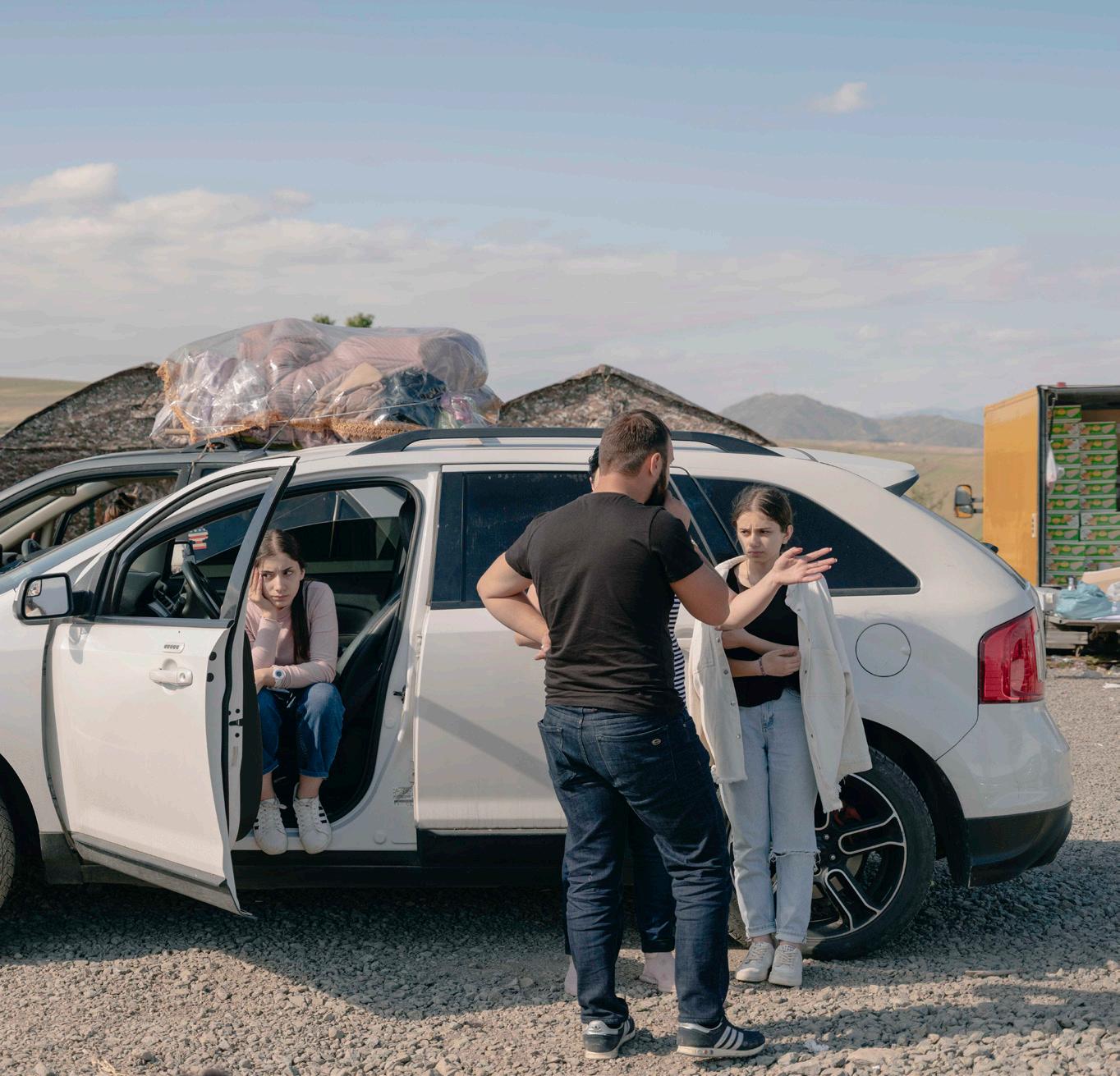
sian mentions significant concessions on the Azerbaijani side, renouncing the use of force and claims to extraterritoriality; on the other, he recognizes the limitations of the treaty in that there are no international guarantees and guarantors, and that Armenia has to renounce the mandate of the Minsk Group. This uncertainty is dangerous for a treaty rewarding the use of force by Azerbaijan, and “endorses a win for an authoritarian state over a struggling democracy.”
Giragosian praises the return to diplomacy and the rule of law yet simultaneously criticizes the treaty for making “no mention of Nagorno-Karabakh” and the “over one hundred thousand Armenians who were forcibly expelled in 2023.” This sentiment is echoed by Nina and other Armenians, noting that the 23 Armenian prisoners of war in Azerbaijan have not yet been released. “One of the prisoners of war is my Godfather,” Nina said. “It feels a bit like a reminder of your weakness.”
Armenians trace this docility in foreign policy back to Prime Minister Pashinyan. “He’s clearly choosing to be very submissive,” said Topakian. As a small state surrounded by more powerful neighbors, Armenia has long relied on compromise. However, critics argue Pashinyan has gone further, eroding both Armenian dignity and sovereignty. Nina pointed to his decision to comply with Turkey’s request to remove the symbol of Mount Ararat from its border stamps. “Peace is established through power,” she said. “When Pashinyan tries to establish peace through compliance and being a slave to Azerbaijan that’s not going to lead to peace. What’s happening now is an illusion of peace.”
Yet even Pashinyan’s harshest critics concede that alternatives are scarce. Giragosian observed that opposition parties enjoy little public support and lack coherent strategies. Topakian echoed this, arguing Armenia’s political class remains unprepared, as a young republic lacking democratic tradition. Pre-Pashinyan, she added, the system of corrupt oligarchs was far worse. Pashinyan’s dominance stems less from popularity and more from the absence of legitimate alternatives.
The Armenian diaspora’s reaction is even more un-
compromising. The Armenian National Committee of America (ANCA) denounced the deal for ignoring Nagorno-Karabakh, the right of return for displaced Armenians, and argued the economic deal commodifies Armenian land and sovereignty for US and Azerbaijani interests. Giragosian shared a pragmatic outlook, arguing that Armenia needs to focus on its future security and development and accept Karabakh as a fait accompli. “It’s easier to be a hardline nationalist when you live in Los Angeles than if you live in Yerevan,” he added.
Together, these reactions underscore the paradox at the heart of the deal. While it may be a breakthrough, Armenians experience it as a codification of defeat that ignores the human cost of displacement, identity, and lost dignity. Nonetheless, officials insist the country must look ahead. As a vulnerable state in a post-Karabakh world, Armenia’s path to development and prosperity lies in embracing peace and channeling its energy towards the future rather than the past.
In Baku, the peace deal was framed as the restoration of sovereignty and as international recognition of Azeri territorial integrity. State media cast it as a step forward both politically and commercially, opening the door to new trade routes and economic integration in the region. Principally, it legitimized President Aliyev’s dynastic rule, brought him out of the shadow of his father and cemented his place in history as the leader who took Karabakh, something no one had accomplished before. “The Azerbaijanis are happy,” said Bryza. “They have to be happy, because President Aliyev’s happy.”
Yet, Bryza suggested this very success may leave Aliyev in a bind. Authoritarian leaders often rely on an external enemy to galvanize popular support and justify domestic repression. With newfound peace, if Armenia ceases to serve this role, Aliyev may have to contend with domestic tensions and find a new means to legitimize his authoritarian rule. Critics argue Baku’s current maximalist posture may risk repeating Armenia’s mistake in the 1990s, winning the battle but losing the longer struggle for stability, durable peace, and domestic growth.
For Azerbaijan, the alternative to regional maximalism lies in looking outward. Oil and gas give Baku opportunities beyond the South Caucuses to forge new relationships with Central Asia, the Middle East, and China. Economists argue domestic security will come not merely from perpetual confrontation, but from economic interdependence–pipelines running West, IT booming in Yerevan, and trade that consigns conflict to the past. Looking outward, rather than inward.
Azerbaijan’s victory, then, presents a dilemma. It has removed the enemy that long sustained Aliyev’s rule, but has opened new opportunities for regional cooperation and growth. Whether Baku defines itself through continued confrontation or through interdependence will shape not only its own future, but Armenia’s as well. Beyond the South Caucuses, these choices ripple outward, from Russia to Turkey and the West (or even the East), the deal presents opportunities and tests of regional stability.
According to Bryza, the deal was an “utter humiliation for Russia.” Once the undisputed power broker in the Caucuses, Moscow has been sidelined by Washington in a region traditionally under its influence. Russian peacekeepers, tasked in 2020 to protect Karabakh and the corridor, are all gone. “Who’s going to do the security? I don’t know, but it’s not going to be Russia,” Bry-
za remarked. The retreat reflects Russia’s broader geopolitical decline. Preoccupied and weakened by war in Ukraine, Russia has minimal bandwidth to meddle in the Caucuses. Nevertheless, Giragosian cautioned that Russian absence may only be temporary, considering Russian interference in the 2024 Georgian elections. With Armenia “looking for more Turkey so they have less Russia,” Giragosian warned of an “angry, vengeful Putin” returning to reassert Russian influence in the near future.
With Russia cast as the “enemy dividend” in Azerbaijan, Armenia is no longer the villainous foil it once was. Giragosian argues this creates momentum for limited normalization, if not longer-term reconciliation, between Baku and Yerevan. Ankara, meanwhile, has consolidated its position as Azerbaijan’s closest ally, strengthening military and cultural ties under the overarching motto of “one nation, two states.” The proposed Zangezur corridor would further cement this, linking Turkey and Azerbaijan to the Caspian and Central Asia. Still, Turkey’s ascendance is not without limits, with some observers noting Aliyev has sought to diversify partners to avoid overdependence on Ankara.
Turkey-Armenia relations are still cold, with closed borders and domestic political tensions. Deeper hostilities underline this diplomatic standstill, formed by a complicated history and the enduring denial of the Armenian Genocide. Speaking at a Yale event in October, former Turkish politician Garo Paylan said he tried to raise the issue in parliament. “But if you use the G-word in parliament, you can be lynched… they are not ready with our struggle,” he said. As the century-old trauma remains unacknowledged by Ankara, many Armenians feel reconciliation is impossible without recognition.
Trump’s 2025 deal was a symbolic breakthrough for US diplomacy in the post-Soviet space. In the past few years, American involvement has grown in Armenia’s economy and through diplomatic ties, particularly through partnerships in the country’s rapidly growing IT sector. Bryza argued that economic stability and growth through US investment could do more to anchor long-term security than any military or peacekeeping force. Still, as Giragosian noted, much of Washington’s attention is shaped less by the White House but more so by the strong Armenian-American lobby in Congress.
With Russia’s retreat and America’s sudden engagement making headlines, the quiet reality reflects a broader multipolarity. The European Union has emerged as a middle ground, less threatening to Moscow, yet more effective in
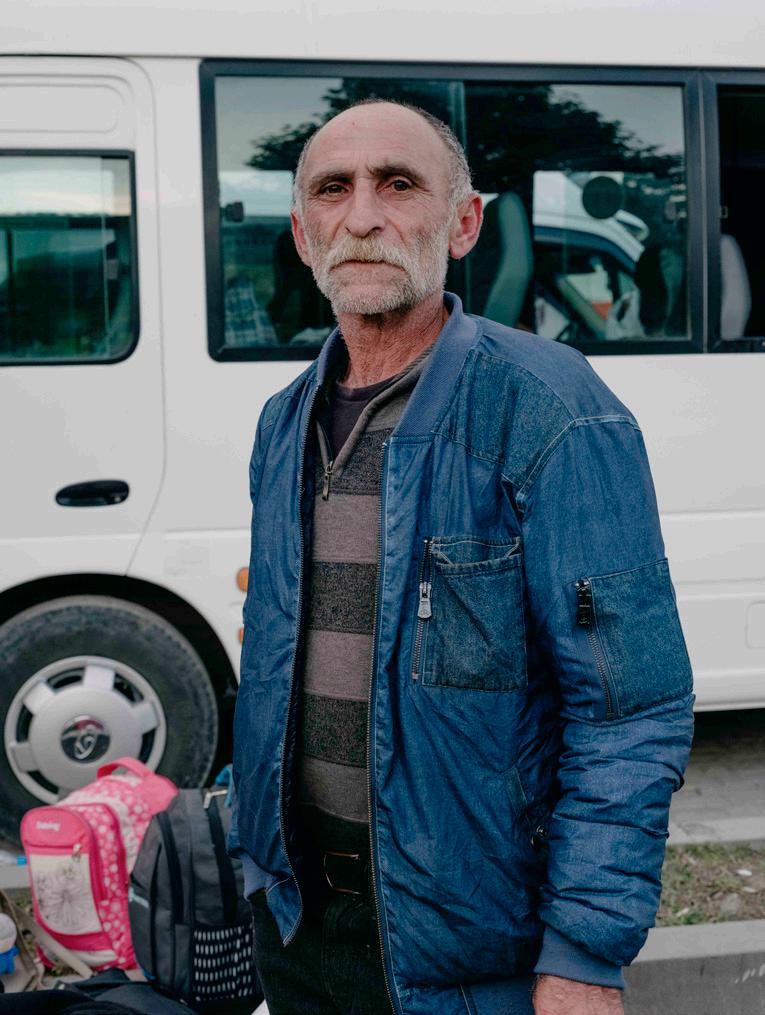
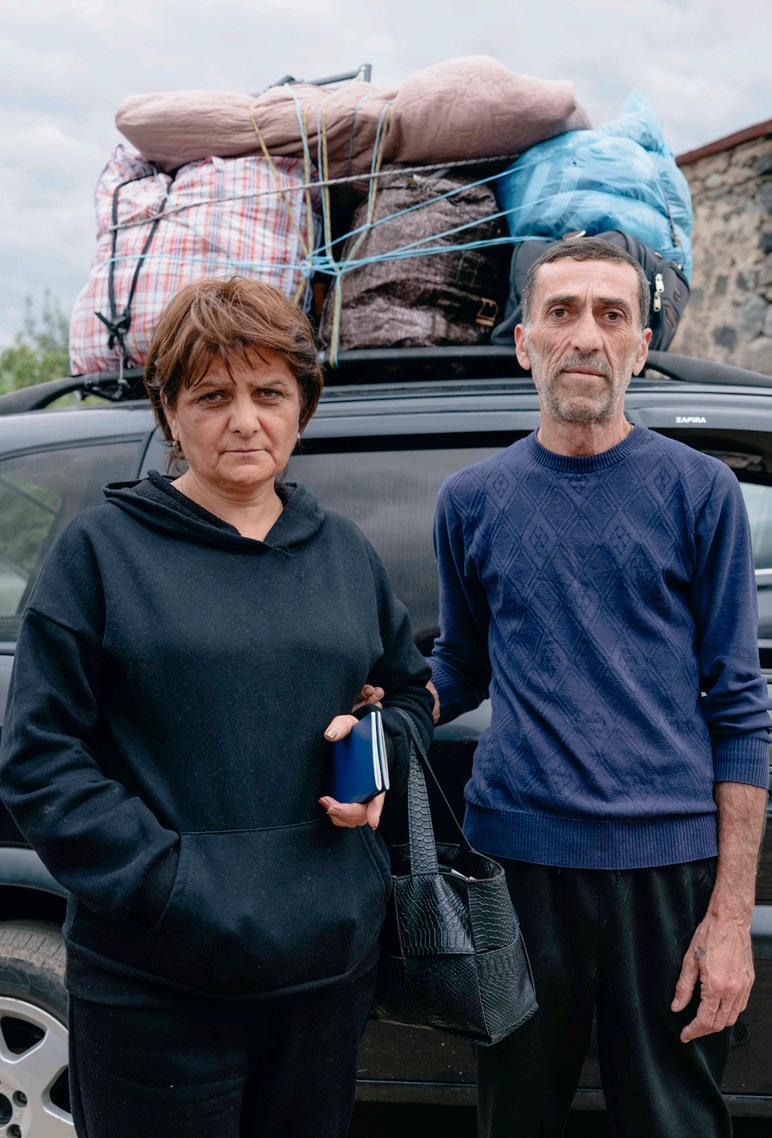
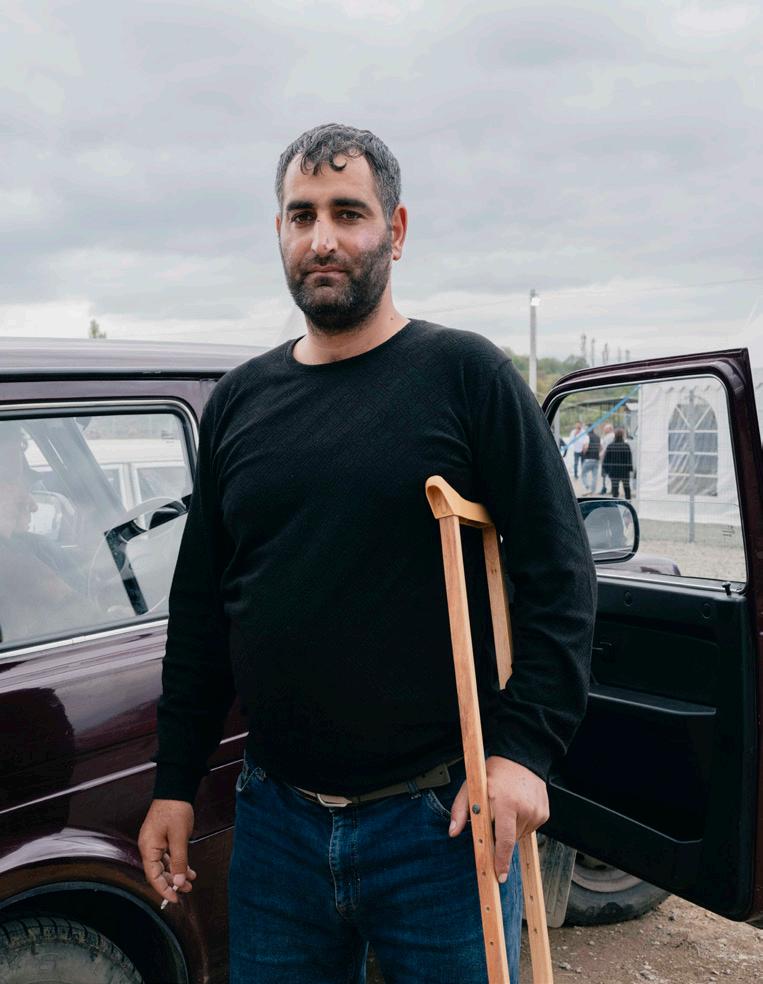
supporting governance, trade, and investment. China, drawing on its experience in Central Asia, is positioned to fertilize the Caucuses not militarily but economically. Alongside the major players, Giragosian pointed out a so-called “junior varsity” of geopolitical actors with growing influence in the Caucuses, including India, Israel, Pakistan, and now even Japan and South Korea. For Armenia, he argued this diversification is not only welcome but essential. “We don’t want to be trapped in the zero-sum game of the West versus Russia,” he said. The outreach to China, India, South Korea, and Japan is less provocative, more sustainable, and offers leverage to bargain with both Moscow and Washington alike.
Still, as Giragosian admitted, this strategy is less about winning than it is about surviving; a vulnerable hand played carefully, hoping to secure a future still unknown.
***
For Rebecca, the photographs of burned-out cars and orphaned children linger as reminders that behind peace treaties, many thousands of lives are uprooted. To her, the danger of war remains real, fed by authoritarian ambitions, irredentist policies, and a submissive Armenian government. “Armenia may not be a country in ten, 20 years,” she said. The loss of Karabakh was not only territorial but existential, a rupture in identity that no deal or agreement can capture. Even as Pashinyan and Armenia may move on politically, the memory of Artsakh endures in stories, grief, and the quiet determination to keep the culture alive.
Giragosian emphasised that survival depends less on reclaiming what was lost but building ahead on what remains. Bryza echoed this, arguing that peace is the only way for long-term development and growth within Armenia, urging a turn towards regional interdependence.
For Nina, resilience means working, albeit imperfectly, towards stability and security. Armenia must play its cards wisely, and grow as a nation and as a people.
To her, the drive out of Stepanakert is unfinished, suspended in memory. Still, she insists on hope. “Why wouldn’t Armenia have a bright future? This is only a tragic chapter in a long book.”



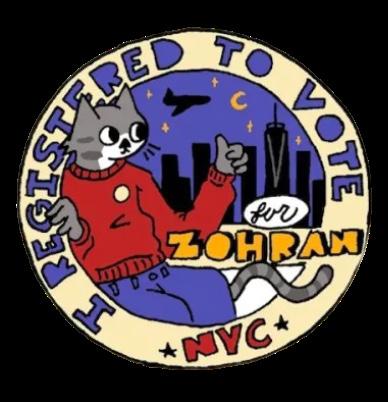

“HE
BY KATERINA MATTA
“If I were mayor,” Mamdani promised, “halal would be eight bucks again.”
In his viral ninety-three-second campaign ad, New York mayoral candidate Zohran Mamdani asked New York City street vendors two questions: How much does a plate—and a street vendor permit—cost? The answers: $10, and $22,000, respectively.
As the vendors explained, city limits on the number of permits issued per year force street carts to rent price-gouged permits from resellers. Mamdani added that at the time, four bills had been proposed in the city council addressing the issue, but they had gone without comment from then-Mayor Eric Adams. If he had been in Adams’ place, Mamdani asserts, these issues would have been at the top of his docket.
The advertisement is characteristic of Mamdani’s entire campaign: a viral sensation focused on addressing the everyday consequences of New York City’s rising cost of living. Though relatively unknown at the start of the year, when the video was released, Mamdani’s campaign strategy has reaped massive success; beyond his win in the primary, Mamdani has gone viral, gained national attention, and enlisted more than 75,000 volunteers to support his grassroots campaign. As the general mayoral election approaches on Nov. 4, he has only gained popularity, with the latest polls predicting as large as a 20-percentage point lead over his opponent, former mayor Andrew Cuomo.
But Mamdani’s virality stems from much more than entertainment. His transparent, short-form content makes his platform accessible to his audience—a distinction Brooklyn resident, Mamdani canvasser, and Yale student Sonja Aibel found particularly appealing.
“[The halal ad] was just a really concrete explanation of the fact that all these things are Image: “I Registered to Vote for Zohran” sticker design contest submissions (Via Hyperallergic)
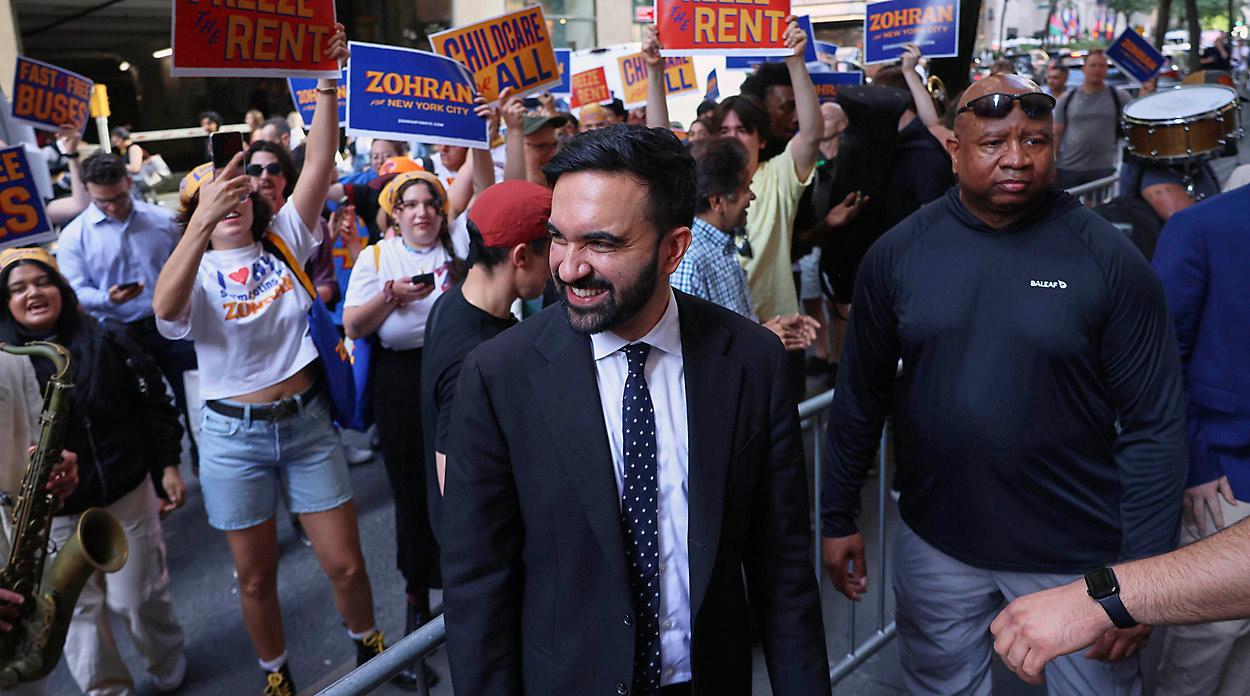
going on behind the scenes that are making it harder for New Yorkers,” Aibel said. “Having someone who’s really smart about policy, understands those patterns, and is going to use that knowledge for New Yorkers and for affordability purposes was really exciting.”
As Aibel emphasized, Mamdani’s campaign platform centered around affordability. Especially in an era of political polarization and policy stagnation, Mamdani’s actionable, nonpartisan approach distinguished itself from the stances of many “big-name” Democrats. His official platform advocates policies like universal childcare, free public transportation, freezing rent, and building affordable housing—all plans to address costs of living and all with strong roots in Mamdani’s democratic socialist background.
“The sentiment right now is a little bit anti-incumbent or anti-establishment,” DeLuca said. “Democrats are really disappointed with their own party, and so electing a traditional Democrat who’s going to do the normal democratic stuff is not enough these days. [Mamdani] has that vibe of, ‘I’m not just another average Democrat. I actually hear you, care about you, and I’m going to try to do stuff differently.’”
Mamdani’s relative youth at only 33-years-old also successfully differentiates him from other prominent Democratic politicians, like 67-year-old Andrew Cuomo and 65-yearold Eric Adams. Between his age and his social media emphasis, Mamdani caters to a contingent of young voters who may feel otherwise disillusioned with the struggling Democratic leadership.
“The biggest thing for a lot of Yale students and young people in general is just that [Mamdani] is a young person,” Riley Getchell ‘27, the Elections Coordinator for Yale Dems, said. “In comparison to the rest of our politicians at the moment, he’s like a spring chicken. His campaign is just bringing so much youthful energy and, honestly, fun back to campaigning.”
Aspects of identity beyond age also played a major role in the race. Mamdani’s opponents often targeted his South Asian, Muslim identity and birthplace abroad in Uganda. In one instance, Andrew Cuomo’s team allegedly photoshopped

Mamdani’s beard to appear darker and “more threatening.” In response to the allegations, Cuomo called the flyer a “mistake,” with spokespeople alleging a former aide approved its production. Mamdani turned this racialization on its head, campaigning in different languages and attending cultural events—an impactful approach considering New York City’s immense diversity.
Above all, Mamdani differentiated himself by campaigning in communities, often literally adopting his platform to suit their needs—like when he collaborated with “Deafies for Zohran” to make his campaign accessible to the deaf community—instead of overlooking those he didn’t connect with. The communities he is meant to represent consistently feature at the heart of his campaign, whether in his frequent appearances at different communities’ religious or cultural celebrations, or his hosting a city-wide scavenger hunt that emphasized engagement with local history. Even as his campaign grows bigger, his focus on community-level organizing keeps his image personal and impactful to his constituents.
“I see people canvassing for him, volunteering for him…but I’ve never seen anyone from Cuomo’s side [in my neighborhood],” Luvaina, a public high school student from Queens who asked to be identified by her first name, said. “[It] feels like you know [Mamdani], because he looks like us, he acts like us, he’s very intertwined with our communities. My friends just saw him at a mosque a few days ago; one of my teachers knew him when he was at [The Bronx High School of Science]. He feels very close to us.”
This mercurial rise to political stardom and potential mayorship has left politicians and onlookers alike asking if Mamdani’s strategy can be replicated, and what precisely the Mamdani effect is. At least part of the answer seems to be his appeal to young people.
Data reveals Mamdani’s high level of support among young people: the majority of his 75,000 volunteers are under 35, he won staunch majorities in younger neighborhoods, and analyses generally show a significant increase in ballots cast by those aged 18-34 compared to the last Democratic mayoral pri-

mary in New York City.
Youth support means more than their ballots alone. Young people, especially when their capability is communicated to them, can communicate across gaps that politicians famously struggle with. For example, they may have access to those with opposing views that politicians do not, such as close family members.
“What we also saw this year was a lot of young people getting excited, and then convincing their parents to vote,” said Kathryn Gioiosa, the executive director of TREEage, a nonprofit that encourages youth civic engagement and hyperlocal organizing in New York. “We made graphics and information on how to do that, especially, telling them not to vote for Cuomo. We saw that impact. When young people make their voices heard about the local issues in their community, and how much that’s going to impact their future, [it’s] really powerful.”
Witnessing a range of support across demographics can help further convince those who are unsure of supporting a candidate.
“When I wasn’t eligible yet to vote, I still really cared about politics,” Aibel said. “It matters that politicians are accessible to younger people, even those younger than the voting age. [Mamdani] just really resonates across different age groups; my grandparents were really excited to vote for him as well. That broad base of support really meant something to me.”
Beyond their ability to generate political momentum, young people are one of the most vulnerable and impacted demographics by the policies Mamdani proposed. Inflation and general economic anxiety threaten the stability of the job and housing markets before young people can even get their foot in the door.
“Just because they can’t vote doesn’t mean their voices don’t matter, and that they shouldn’t have a say in who represents them,” Gioiosa said. “The people almost most affected by that are young people who want to continue living in the city they grew up in…It is so impossible to find an affordable place to live or [pay for] groceries sometimes, so young people are again one of the most impacted communities by [Mamdani’s] policies.”
Getting civically involved does more than give young people a voice; it also brings them closer to their communi ties, according to Gioiosa.
“Having people learn about their com munities and talk to people even down their block that they’ve never real ly talked to before was really impactful,” Gioiosa said. “A lot of students said that they were able to connect with their neighbors and the rest of their community over trying to get Zohran elected, and having these conversations around the re ally local issues in their community, and how Zohran could be a partner in helping to fix them.”
Especially for supporters of the struggling Democratic Party, the energy surrounding Mamdani’s campaign can feel like a glimmer of hope for the future. Yet, gen eralizing Mamdani’s success beyond New York itself proves difficult. Given the overwhelming Democratic support in New York City, Mamdani has not had to fight through the same partisan noise as politicians in battleground states. DeLu ca questioned whether Mamdani’s strategy could work in an environment that was not homogeneously
Democratic, but rather mixed across parties like in most major elections—especially in an era of ever-growing political polarization.
Some, such as Founder and Director of Yale Youth Poll Milan Singh ‘26, caution against characterizing Mamdani’s virality as an indicator of broader political support.
“I think people should be cautious in reading too much into online support for Mamdani as indicative of real-world support,” Singh said. “I would guess that a plurality of people, at least nationally, do not know who he is and don’t have opinions of him.”
Even the groundbreaking participation of young people could be a poor sign for Democrats; according to a poll conducted by Yale Youth Poll, 18-21-year-olds nationwide have an overall conservative bent. Singh warned that it will be hard to predict whether this trend will continue without data from the upcoming midterm and 2028 presidential elections.
“It really depends on whether this shift towards Republicans among young people was just a one-off thing,” Singh said. “Are young people going to react to the policies Trump is enacting now and say, ‘Oh, actually, this isn’t what we voted for.’ Or was this a permanent, long-term shift? That question is worth a lot of electoral votes.”
So, where does this leave Democratic supporters looking for hopeful takeaways from Mamdani’s campaign? Regardless of political affiliation, Mamdani’s historic run exemplifies the growing strength of youth participation in politics.
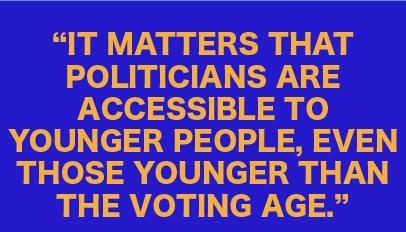
His campaign underscores the potential for change that could emerge if politicians acknowledged youth voices, and young people took it upon themselves to get informed and involved in turn.
Luvaina pointed to the importance of education in supporting youth political participation when asked what she would change to increase youth civic engagement.
“Messaging should definitely change, especially through school and education,” Luvaina said. “[Schools should teach] us to be more involved in politics even before we can vote [by] reaching out to representatives and volunteering. [They should] teach us that everything is political.”
Luvaina emphasized the ability of young people to enact change, especially at the local level. She pointed to the example of a classmate who spoke at a New York Campaign Finance Board Youth Voter Assistance Advisory Committee (VAAC) hearing, causing the board to allocate more funds to the development of social studies and English curricula in public schools.
Gioiosa emphasized how local politics often go overlooked in civic education curricula. “Schools don’t usually teach anything about local policy or politics; it’s usually very focused on the national level and our federal government,” Gioiosa said. “A lot of [our work] is through civic education workshops, understanding how the actual state legislature works, and then what are the interception points we can use as students and young people and even just the general public to make our voices heard in these different processes.”
Along with getting educated, Gioiosa said students and young people ought to fill the gaps they find in their local representation. This initiative already has nationwide support; the organization Run for Something, which supports young candidates running for state and local office, reported 10,000 new sign-ups after Mamdani’s primary victory.
“Seeing someone be able to do it and take that risk, a lot of other people were also inspired by it,” Lavaina said. “They were inspired to change and take that risk too, because they didn’t feel alone anymore.”
Already, politicians nationwide are starting to take notes from Mamdani.
“I’ve noticed that this semester, the campaigns [that Yale Dems volunteer for] want us to do a little more community outreach and research on the district,” Getchell said. “I think that’s super important and amazing to see, that instead of just focusing on what the word of consultants from DC is, they’re wanting us to look into the community and see specifically how that outreach is going to be felt.”
According to Gioiosa, understanding the intersections between our struggles is key to our collective empowerment. Where
“[WE’RE] TRYING TO BUILD THESE CONNECTIONS AND SHOW THAT WHEN WE DO SOMETHING LOCALLY, IT TRANSLATES TO THE NATIONAL LEVEL AND CAN MAKE A REALLY BIG IMPACT. ALL THESE ISSUES ARE INTERCONNECTED, AND WE NEED TO WORK TOGETHER TO PROTECT OUR COMMUNITIES AGAINST WHAT IS HAPPENING AND BE STRONGER TOGETHER.”
much of the Democratic leadership nationwide seems focused on partisan battles, she encourages acknowledging diverse voices and validating the problems we share––as Mamdani did in his campaign. When discourse seems too stratified to break through the noise, perhaps young people offer a solution: they can navigate dissonance and organize in ways elder politicians cannot––or at least have failed to do recently.
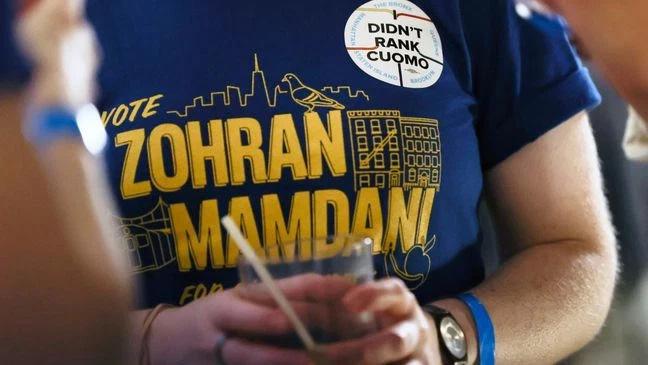

“What we’re trying to do at TREEage, and what I see Zohran also trying to do, is trying to build the connections between these issues right now,” Gioiosa said, citing immigration justice, climate activism, and youth civic engagement as an example. “[We’re] trying to build these connections and show that when we do something locally, it translates to the national level and can make a really big impact. All these issues are interconnected, and we need to work together to protect our communities against what is happening and be stronger together.”
By Chantal de Macedo Eulenstein

On August 1st, 2025, Alexandre de Moraes, Vice President of the Brazilian Supreme Court, awoke to find his visa revoked, his assets frozen, and his family and holding company targeted by similar sanctions.
That afternoon, he walked into the Brazilian parliament and declared, “The due process of this Supreme Court will not speed or slow down the process, the Supreme Court will ignore the imposed sanctions.” Sanctions from the U.S. would not impede the Supreme Court from moving forward with the trial of former President Jair Bolsonaro.
On September 11, Brazil succeeded in convicting Bolsonaro to 27 years and three months in prison for undermining voter confidence in the 2022 election system and, after losing, sought to subvert the democratic process by fighting to remain in power.
Bolsonaro’s offenses included a plan to declare a state of emergency, dissolve the Supreme Court, grant the military unprecedented power, and assassinate his then-opponents, Luiz Inacio Lula da Silva and Alexandre de Moraes, the latter of whom had opened several investigations into his behavior during his presidency.
Much like the January 6th insurrection in the United States, Brazil experienced a similar event in January 2023— thousands of Bolsonaro supporters staged a coup to contest what they falsely claimed was a stolen election.
In the wake of Bolsonaro’s conviction, Trump has launched rampant attacks on Brazil. What began with sanctions on those responsible for advancing Bolsonaro’s conviction has evolved into a declaration of a 50% tariff on coffee, cacao, and beef.
Brazil has stood in defiance against Trump in its conviction of Bolsonaro, and in turn has framed itself as a bastion for democracy.
“If you had told me in the 1970s that Brazil would be demonstrating to the United States how it should act politically, I wouldn’t have believed you,” said Stuart Schwarz, a professor of Latin American History at Yale University, who specializes in Brazil.
The media has echoed this sentiment. In late August, The Economist declared, “Brazil offers America a lesson in democratic maturity.” In a New York Times Op-Ed, Harvard professor Steven Levitsky, author of How Democracies Die, proclaimed that, “Brazil Just Succeeded Where America Failed.”
To the world, Brazil appeared to be a defender of democracy. The reality is far more complicated.
The current makeup of Brazil’s judicial institutions is what gave it the ability to convict Bolsonaro. Brazil’s Supreme Court, the branch responsible for sentencing Bolsonaro, is largely left-leaning. Brazil’s constitution is also much younger—only 37 years old, com-
pared to America’s 238-year-old constitution.
“Our history with democracy is very recent…I would risk saying that we are a little bit more tuned to what an aspiring dictator looks like. In the United States, it’s the first time that the rule of law has been questioned,” Hector Coelho, a second-year law student at the University of São Paolo, said. “We have a lot of fundamental rights embedded in our constitution that allow the Supreme Court to make decisions with a little bit more freedom than the United States.”

Brazil’s multi-party system has also allowed the conviction to surpass political polarization. This multi-party system includes a central section referred to as “centrão,” meaning “large center,” composed of parties in the Brazilian Congress that have no particular political affiliation.
“[Centrão’s] ideology is money. Wherever their personal interests go, they go,” Coelho said.
Under this system, there are more parties and key figures to persuade in Congress. Therefore, Brazil has not fallen into the two-party polarization pitfall that currently dominates the U.S. political scene.
“It’s harder for you to dominate the institutions because there are more parties, and that makes our democracy a little bit more stable when compared to the United States,” Coelho continued. Supreme Court Justice Moraes has become one of the most prominent figures in Brazil’s stand against authoritarianism. Despite having long fought against right-wing extremism, both in Brazil and in the US, his aggressive approach has warranted criticism. In 2023, he jailed individuals without trial for their social media posts, ordered raids, and, in 2024, notably banned Twitter after it refused to block accounts accused of misinformation.
Moraes’ conviction of Bolsonaro was no less problematic. Having been a target in his assassination plans, Moraes faced an inherent conflict of interest in presiding over the case. The judge is meant to act as a neutral arbiter, with the prosecution serving as the active party.
“The prosecution has to bring to the table the law and the juridical action to provoke the judge. That’s how it should be done,” said Matheus Nucci Mascarenhas ‘28 from Brazil. “Moraes basically absorbed Bolsonaro’s coup d’état case into a larger, ongoing lawsuit so that he could be the one to judge the decision.”
The Court itself, which included Cristiano Zanin, Lula’s former personal lawyer and Minister of Justice, ensured that the conviction was essentially decided before the trial even began.
Brazil is no stranger to pushing the boundaries of due process. The malleability of Brazilian law is rooted in its history: the country suffered a military dictatorship from 1964 until 1985,
commencing when the military deposed the sitting President João Goulart in a coup. Throughout the dictatorship, arbitrary detentions, torture, executions, and forced disappearances of political dissenters were widespread, resulting in 434 deaths and missing persons.
Yet, no one was held accountable: following the dictatorship, those involved were absolved of responsibility through the 1979 Amnesty Law. The law, which had originally been intended to protect political dissidents and exiled activists, was misused to protect those accused of wrongdoing. For academics and public defenders, Brazil’s conviction of Bolsonaro has meant retribution for the lack of accountability caused by the 1979 Amnesty Law.
“I must know at least 100 people who were tortured in Brazil. No one was held responsible for the coup,” said James Green, a former Professor of Portuguese and Brazilian studies at Brown University, and member of the Washington Brazil Office. “Finally, there is justice,” Green said.
Drafted after the military dictatorship, Brazil’s constitution reflects its status as a fledgling democracy with inherently unstable politics.
“In Brazil, everything can happen. Our history is characterized by plot twists,” said Gabriela Spangehro Lotta, a professor and researcher in Public Administration and Government at Fundação Getulio Vargas (FGV).
This instability is also evident in Brazil’s shifting ideologies. In the past 40 years, the government has alternated between the left and the right wings. The rule of law, and its definition, have changed along with it.
“Brazil is a country that was founded in a coup,” Mascarenhas said. “The rule of law in Brazil was never something very pristine.”
Bolsonaro was convicted far beyond the realm of due process—Moraes strayed from democracy to defend it. For some Brazilians, however, this is exactly what they believe was needed to make Bolsonaro’s conviction possible.
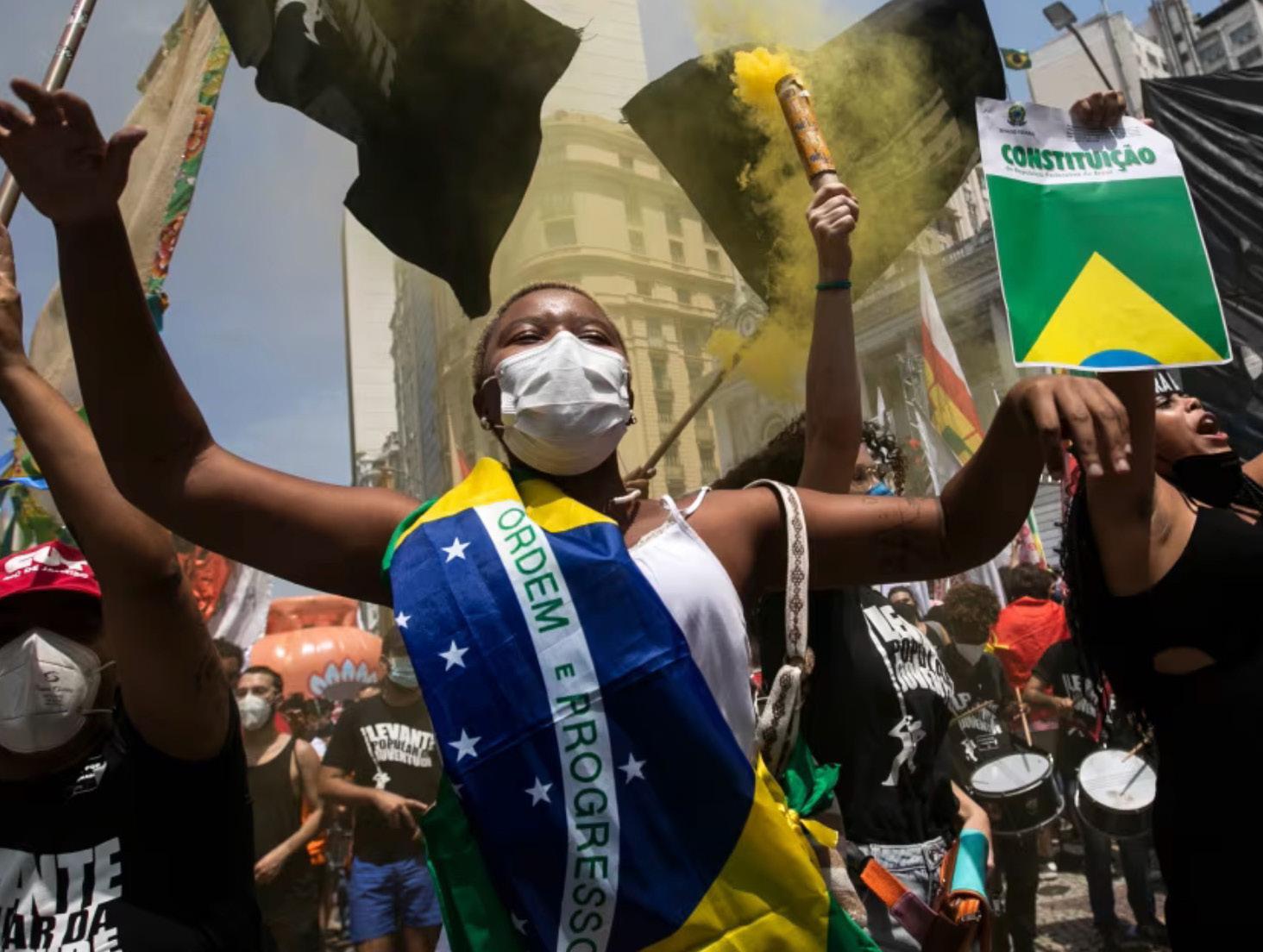
“If [a political group] is playing outside of the system, then the system is not going to contain them. Due process should not be ignored because it exists to avoid injustices, but when there’s nothing you can do within the system to stop them, and what they’re doing is actively dangerous, then maybe you have to step outside the box,” Coelho said.
Others, like Mascarenhas, see the lack of due process as dangerous.
“Because the due process was not fully respected, there is still the possibility of this whole case being nullified or changed,” Mascarenhas said.
This lack of due process panned out differently for Lula. In 2016, Lula was sentenced to 12 years in jail for corruption by Sergio Moro, a federal judge in the state of Parana. During his trial, the judge actively colluded with the prosecution, documented through an exchange of messages.
Moro, upon Bolsonaro’s election in 2019, was appointed Minister of Justice, rewarded for his politically motivated role in convicting Lula. Lula was imprisoned for a year and a half before his lawyers successfully argued in the Supreme Court that collusion had tainted the case, leading to its nullification in 2019.
Unlike Lula, however, Bolsonaro stands little chance of being acquitted. Amnesty can only take place with the joint agreement of the President, Supreme Court, and Congress, which is unlikely to occur while the left is in power.
Lula’s presidency, following his imprisonment in 2017, reflects the instability of Brazilian politics.
“Brazilian politics are never set in stone because who would imagine that Lula would come back as president, and now be the favorite to run for re-election,” Mascarenhas said.
***
Trump’s sanctions and tariffs on Brazil are perceived as purely politically motivated, and have entrenched Lula’s popularity and unified Brazilians against Bolsonaro. At the onset of U.S. tariffs increasing from ten to 50 percent last month, Lula notably


declared: “Brazil will never be a U.S. colony.” It is the American infringement on Brazilian sovereignty that has angered the Brazilian populace the most.
“It’s making Brazilians feel more united, not because of the conviction of Bolsonaro, but because of Trump’s sanctions. The government is framing the sanctions as a common enemy of the Brazilian people,” Coelho said.
Trump’s tariffs have done little thus far to truly disrupt the Brazilian economy. Coffee prices had been expected to increase in the US before Trump lifted the tax on coffee specifically. Instead, tariffs have only pushed Brazil to trade more with China, with which it already had economic ties.

“Lula has a perspective of the empowerment of the Global South,” Mascarenhas said. “Lula’s perspective and actual foreign policy have been to strengthen the connection between those countries.”
Critical to this empowerment is BRICS (Brazil-Russia-India-China-South Africa), an economic alliance of emerging countries that has expanded to include Egypt, Ethiopia, Iran, Indonesia, and the United Arab Emirates.
Shortly after the US launched attacks on Iranian nuclear facilities in June, BRICS hosted a meeting in Rio de Janeiro. At the meeting, an Iranian official was received with high honors, along with the foreign minister of Russia and the second-ranking member of the Chinese Communist Party (CCP). Russian President Vladimir Putin also joined virtually. During this conference, Lula verbally articulated BRICS’ desire to create a currency independent from the dollar. Losing the dollar as the international trade currency is one of the biggest economic threats the US can face. While Trump’s tariffs are seen as political retaliation, they can also be interpreted as measures to keep Brazil—and Lula’s embrace of the global south and BRICS—in check. Only days after the BRICS summit, the US declared that tariff rates against Brazil would increase from the standard 10 percent. Nearly a week before Bolsonaro was convicted, they were implemented.
“My analysis on it is that [the sanctions] are really a response to the increase of the influence from the BRICS block,” Mascarenhas said.
“I would say that Brazil has a very weak memory of its events and the people, and that’s just a part of the way that Brazil developed, and maybe it’s the fault of our education,” Coelho continued.
The narrative that Brazil is finally redeeming itself from the amnesty following the dictatorship is confined to academics and those who hold public office. For most Brazilians, recent events have simply reflected accountability for the unjust actions of a former president.
“It’s not about the dictatorship. It’s about a bad president who did bad things to Brazil, and he’s been convicted for that,” Lot-
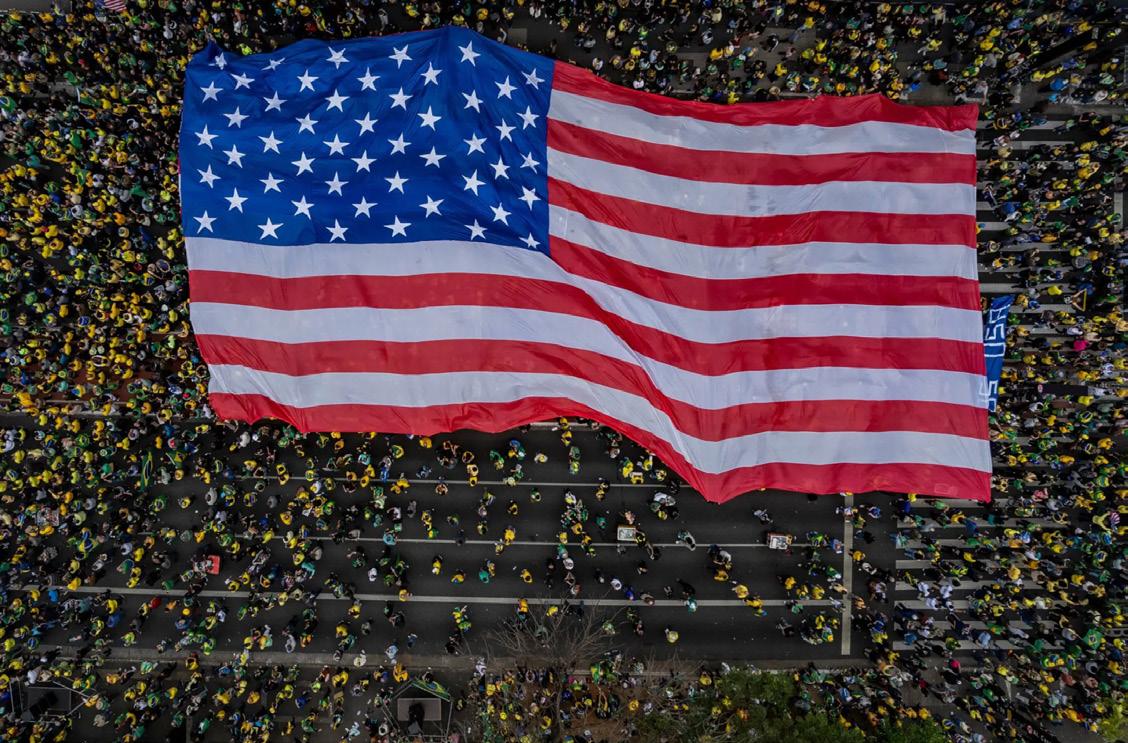
ta said.
Unlike the military dictatorship, corruption is central for Brazilians. In 2016, then-President Dilma Rousseff was impeached after being accused of illegally transferring funds between government budgets, in order to increase her chances of re-election.
At the time, corruption ran rampant throughout Rousseff’s Workers’ Party as collusion surfaced related to the state oil company Petrobras. As a result of inflation hikes and unemployment, Brazil’s economy rapidly spiraled downward. The Brazilian stock market reached record lows, and the value of its currency halved.
Rousseff’s impeachment raised several questions about the state of Brazilian democracy. Was Rousseff impeached for a crime she committed, or was her ousting simply politically motivated and influenced by the poor state of the economy? Regardless, Brazilians, disillusioned by the economy and corruption, felt vindicated by her impeachment.
“[People were] just so upset with the idea of corruption in government, and then when Dilma was impeached in 2016 and Lula was arrested [later], everyone was euphoric,” Mascarenhas said.
The economy and trust in government were once the most important aspects of politics for Brazilians. The internet, however, especially in covering Bolsonaro’s trial, has fueled political discussion and highlighted the threat of dictatorship.

The U.S. played a large role in the Brazilian dictatorship of the 1960s through the 1980s, facilitating the transfer of power to the Brazilian military. Despite this, the military dictatorship and the U.S.’s involvement are not prominent in the everyday consciousness of most Brazilians.
“That sentiment that we should avoid dictatorships, and that… the military dictatorship was very bad, that was once reserved [for] academics. It’s now coming to popular view through all of this discourse, and Bolsonaro’s trial is making people more aware,” Coelho continued.
***
Brazilians suffer from vira-latismo. For decades, Brazilians have embodied the role of the metaphorical “vira-lata”— Portuguese for mutts who feed from trash cans, like Brazilians have fed on American cultural and political scraps. To many Brazilians, America is the embodiment of the democratic, economically stable force that their own country strives to be.
“Brazilians overestimate the US and underestimate Brazil,” Mascarenhas said.
According to Coelho, vira-latismo is embodied by both Bolsonaro supporters and Brazilian immigrants in America who support Trump.
“They have this really heavy sentiment of vira-latismo, like, ‘I am upper middle class and my country sucks — I wish I could live in the United States,” Coelho said.
Vira-latismo has manifested itself in the mass demonstrations of Bolsonaro protesters against his conviction. In early September, thousands of protesters unfurled a basketball courtsized American flag on the streets of São Paolo. Trump has become a symbol of resistance for the Brazilian right.
“It was like a really coordinated movement to praise the US, so the whole political movement has been embedded in this idea of the US as a savior of Brazilian democracy,” Mascarenhas said.
The role-reversal Brazil has taken on in its defiance of Trump has done much to combat vira-latismo.
“I think, for us Brazilians, we are so proud of it…We have not been humiliated,” Lotta said.
“[Newspapers] are also reinforcing this idea that we are defending our economy, and other countries are not able to do the same. But it’s not connected to Lula necessarily, it’s much more about us as a country, as a society.”
The media’s rush to praise Brazil for “setting an example” overlooks the precarious nature of the struggle and the fact that Brazil has done what should be considered standard for all countries. Bolsonaro’s conviction is a temporary example of democratic vitality; it does not reflect an established pattern.
“Democracy should be the bare minimum… I think that the media is just interpreting the Bolsonaro conviction a little bit immaturely,” Coelho said.
“The democratic institutions are holding up by a wire,
and it should be a warning sign that what we did here is considered a really big deal.”
While the conviction of Bolsonaro successfully repelled an imminent threat to Brazilian democracy, this victory is a precarious one. The very act of protecting democracy has exposed a dangerous systemic vulnerability: Bolsonaro was convicted without strict adherence to due process. This suggests that in its haste to safeguard its institutions, the Brazilian judiciary risked undermining the fundamental rule of law, revealing a system willing to sacrifice core legal principles in the name of political preservation.
The democratic stability Brazil has achieved through Bolsonaro’s conviction is not guaranteed— it rests on a Supreme Court facing imminent change. As three justices from the Supreme Court approach the mandatory retirement age, the Brazilian election cycle risks replacing the justices with ones who are less inclined to protect Brazil against dictatorship.
“For every election that passes, we have to safeguard our institutions through our judiciary system—which makes the stakes of every election higher,” Coelho said. “We’re just treating the symptom of a disease and not the cause.”
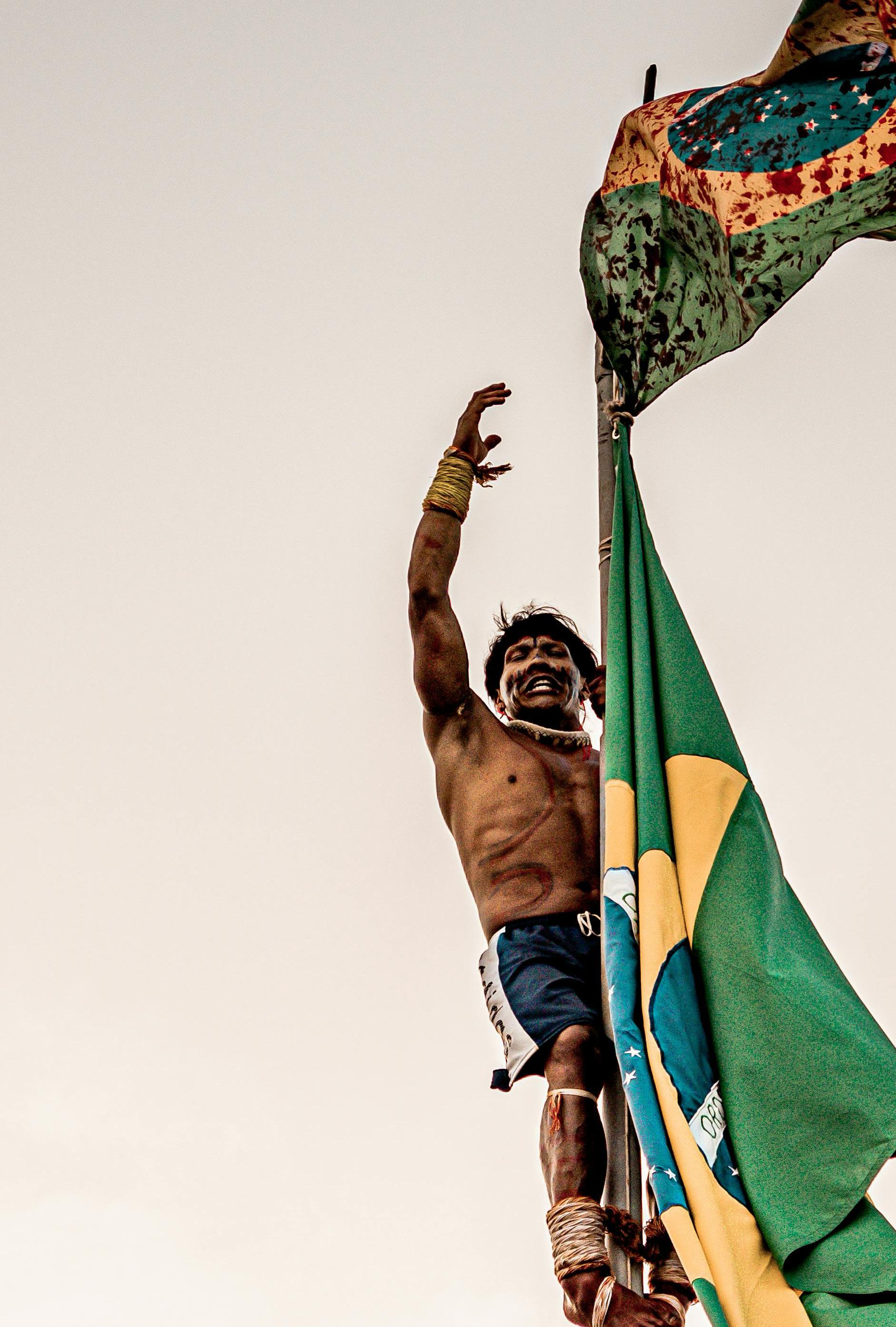

BY ELIZA DAUNT
Platon is one of the world’s most celebrated photographers, renowned for his portraits of world leaders such as Vladimir Putin, Donald Trump, Barack Obama, Muammar al-Qaddafi, and Bill Clinton, as well as iconic cultural figures including Muhammad Ali, Edward Snowden, and Stephen Hawking. Beyond capturing the powerful, Platon has dedicated himself to amplifying the voices of those fighting for civil and human rights through his non-profit organization, the People’s Portfolio. This work culminated in his 2024 collection The Defenders: Heroes of the Global Fight for Human Rights, which spans 15 years of documenting human rights activists around the world. Having shaken hands with more of the world’s most powerful leaders than perhaps anyone else, Platon offers a rare perspective on power—from those who wield political and financial influence to the everyday heroes whose courage shapes the world.
This interview has been edited and condensed for clarity. The full, extended version is available online.
You’ve photographed Trump multiple times—how does he wield media and public attention to assert power?
A few days after Trump had won the 2024 election, I was waiting for him to appear at Mar-a-Lago to do his portrait for Time Person of the Year. He was literally forming his cabinet around us that day and was called away to an emergency meeting about tariffs.
Nearby, all the editors of Time were also waiting to interview him after my photo shoot. As I waited, I started talking to one of them.
He laughed, saying that Trump’s first cover was fake—he had
made it himself and hung it in his Trump Tower office. Soon, all the journalists were laughing at the idea that Trump had faked his own Time cover.
So that’s kind of funny, but think again—he’s a man who has a vision and will do anything he can to make that vision come true. He sees himself on the cover of Time, even if he’s not, and the vision is so strong he makes a pretend dummy of it himself and puts it on the wall for others to see.
And now, as all the editors were laughing at the fact the first one was fake, I said, “Yeah, that may have been fake then, but it’s not fake now, is it?”
He’s just acquired the position of being the most powerful man in the world. He beat all his political opponents. He’s got dominance over the Supreme Court. He’s got the Senate. He’s got Congress. He won all seven swing states in America. And he’s nearly had more Time covers than anyone in history. You guys gave him that. So, I don’t know why you’re all laughing, because if there’s a battle between you journalists, and Trump, it seems pretty clear that Trump is victorious.
There’s this wood paneled room in Mar-a-Lago that’s used all the time for press. When you walk in, there’s this portrait of Trump on the wall in the 1980s. He’s wearing a tennis sweater and he looks very regal. Very handsome! Underneath the picture, it says, “Donald Trump, The Visionary.”
It’s all there, man, it’s all there. And so many people in the media missed it. They were distracted by chaos and the jokes and the crazy behavior. And while Trump gave them all that to chew on, he just plodded along and made things happen.
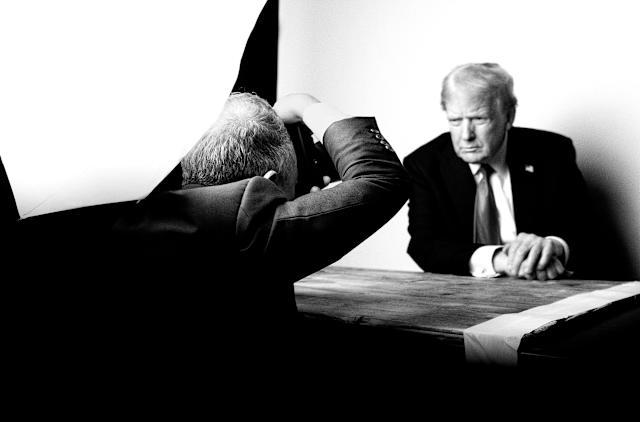
So, while I was waiting—and it was a long meeting, three or four hours— his team was playing me music.

Before a shoot, I have to empty my brain so that when the person walks in, I can concentrate 100% on who they are. It doesn’t matter what my agenda is. In fact, I must not have an agenda. I have to strip myself so

bare that all my attention and senses are consumed by that person’s presence. Only then will I see, catch, and capture the little details that most people might not always see. It takes a very high level of concentration.
With that said, I’m going into this state of hyper-observation and concentration, when they decide to start playing music. Normally, when you’re in an elevator or supermarket, you hear the music but you’re not really listening.
But in my state of hyper alert, every single detail around me is magnified 100%. All of a sudden, these songs go into my brain. They’re all very famous. I know almost all the words to all the songs.
I thought, “Wow, this is very odd. The new president is playing me pop songs.” You would think they’d be playing Beethoven. Who chose these, and why did they choose them?
Eventually, he walks in. We spent a few minutes talking about how our lives have changed since we last met 22 years ago. A lot has happened to me, a lot has happened to him.
Then I said, “Mr President, I’d like to ask you about the music I’ve been listening to.”
He said, “Oh, that’s my personal playlist. I asked them to play it for you.”
I said, “It’s very long––I’ve been here four hours without a repeat.”
He said, “There are 2,000 songs on it. I chose each one very carefully. Each tells a story, my story.”
Then I realized it all made sense. He’s working with material you already know, so you don’t have to work too hard to listen to the message. What he’s doing is harnessing that message, twisting it, changing its meaning, and giving it back to you. He’s mobilizing popular culture and sending it into battle.
I discovered afterwards that he played that playlist at his rallies, to hundreds of thousands of people. I presume he plays it to all the politicians and world leaders while they’re in the waiting room to meet him.
at my Time cover. At one point, I noticed his hand slipped, and there was this dark mark there.
“What’s that on your hand?”, I said. He showed me, and he had a big bruise.
I said, “Wow, what happened? Did you hurt yourself?”
He said, “No, it’s from shaking thousands of people’s hands during the campaign.”
I realized people aren’t just politely shaking his hand; they’re grabbing it. There’s passion. They’re pulling it.
Now, Biden, I don’t know how many hands he shook. I don’t think he did many rallies. Trump did a hundred rallies. Whether we agree with his politics or not, that guy was the hardest-working man in show business and politics combined. Biden was heavily protected. They wouldn’t let him see anyone or sit for me, even when I invited him. There was a smoke screen, and you couldn’t get to him. In politics today, as I said at the beginning, all you need is attention, and if you’re not getting it, the game is over. Trump knows this better than anyone.
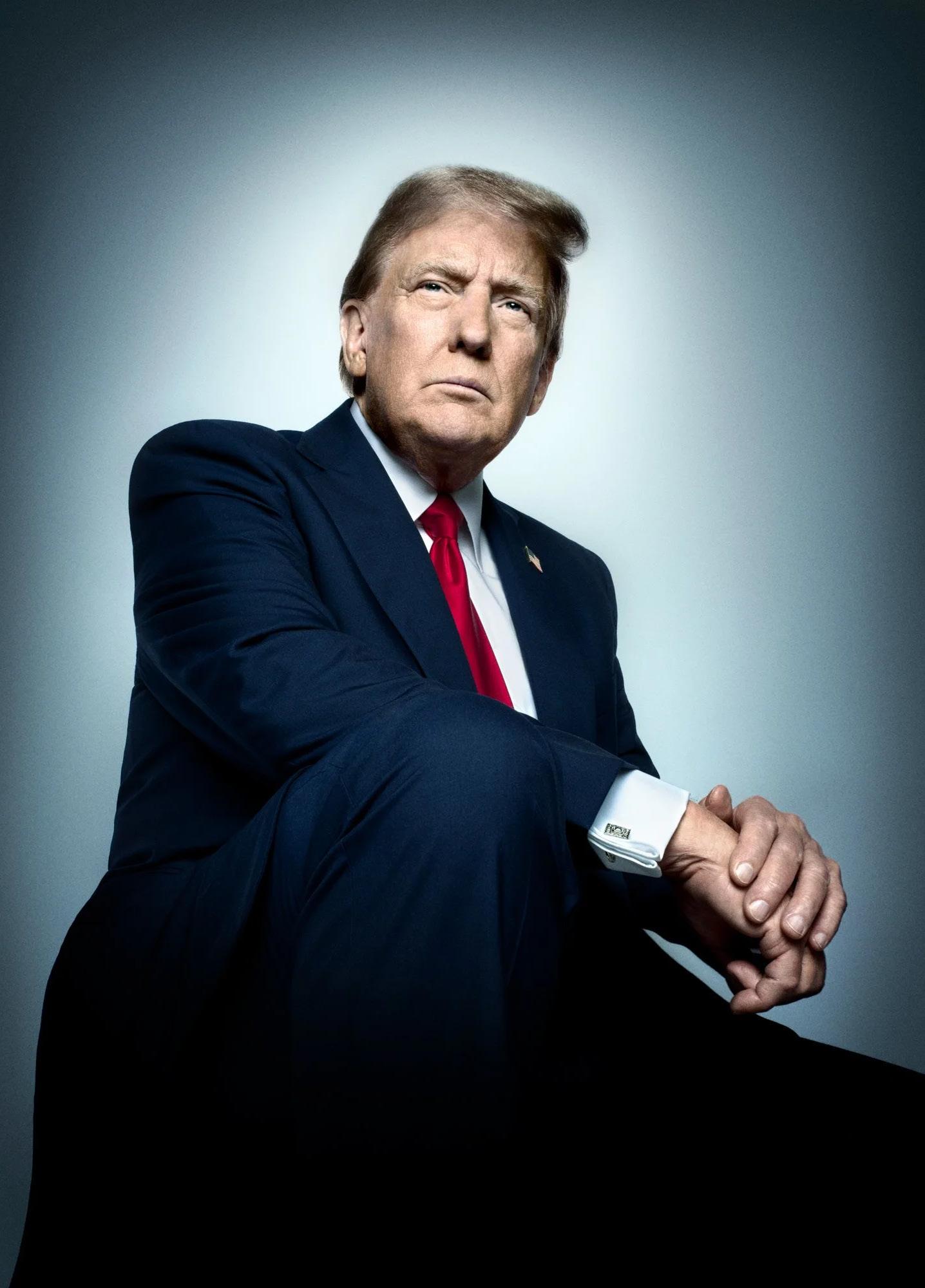
Now, what are the songs? We Are the Champions, by Queen. The Winner Takes It All, ABBA. My Way, Frank Sinatra. Nothing Compares 2 U, Sinéad O’Connor. Suspicious Minds, Elvis. Nobody Does It Better, Carly Simon.
I’ve never met another politician in my life who spends their valuable time making a playlist to play to people before they meet him. Now you start to see what he’s doing. He’s creating a narrative. Creating a mood. So, when you meet him, the story has already been told.
In every one of my pictures, he has his hands on his leg, and one hand covering the other. You’ll see it if you look

Trump is interesting to me because everyone underestimates him. They write him off as a clown and assume he’s not intelligent. I would argue that he’s one of the most cunning, clever world leaders I’ve ever met.
He’s in tune with something different. Most politicians think that their qualifications to become a power player are to have gone to Yale, Harvard or one of the most incredible universities in the world, and then to work their way up through an established system.
For Trump, you could say his biggest qualification was having had his own reality TV show. Now we can laugh at that––it is kind of funny––others may say it’s terrifying.
A reality TV show’s success is built on ratings: if they’re bad, the show is cancelled; if good, it goes on. He has turned politics into a game of ratings, which really it always was––votes being ratings. It just so happens that Trump’s qualifications––capturing your attention and holding it––is currently the biggest social currency there is. That’s why he’s always talking about ratings and audience size. That’s his metric system.
His goal was to connect with people, communicate with them, inspire them, capture their attention, and bring them on board. He sees that if you can win people over, you can exercise power.
In 1967, John Lennon said, ‘All You Need Is Love’. If Donald Trump made a statement today, it would be, ‘All You Need Is Attention’. That’s the most valuable thing now. Everything has shifted.
What did photographing Putin teach you about how power works?
Putin was the first time I had been exposed to this game, the theatre of exercising power. I was really nervous. I couldn’t believe I was in the room with him. Then, little by little, he gradually got closer and closer to me, to the point where I’m just a couple of inches away from his nose, and then we’re talking about the Beatles.
Power is a really interesting dynamic. We all use it. Think about your family or group of friends, if I asked who the most dominant person is, they would probably become pretty clear, pretty quickly.
There are mannerisms we do. They might not laugh as much at a joke, hold back, make you work harder. The worst bit is, as soon as you sense this, you find yourself working harder. They’re rewarded, the cycle repeats, and before you know it, the dominant–sub–dominant dynamic is extreme.
Now, magnify that a million times when it comes to politics or business, and this thing gets out of control. That’s what I’m up against.
So, with Putin’s style of power, he’s not dominant from the beginning. If the person who is sub-dominant stops playing the game, then the person who’s dominant loses their power.
I’ve learned that because I don’t want any of their power, the power dynamic doesn’t work on me. I don’t want their political power; I wouldn’t know what to do with it. If I’m working with someone very wealthy, like Bill Gates, I don’t want their money and I certainly don’t want their fame. I’m immune.
What I really want is an important picture, and if they’re prepared to give me that, then that’s our currency. We have to collaborate to make something that’s meaningful, that stimulates respectful debate. If I can do that, then I’ll work hard to get that. But from them, personally, I want nothing, which means their power is meaningless to me. That makes a great leveler.
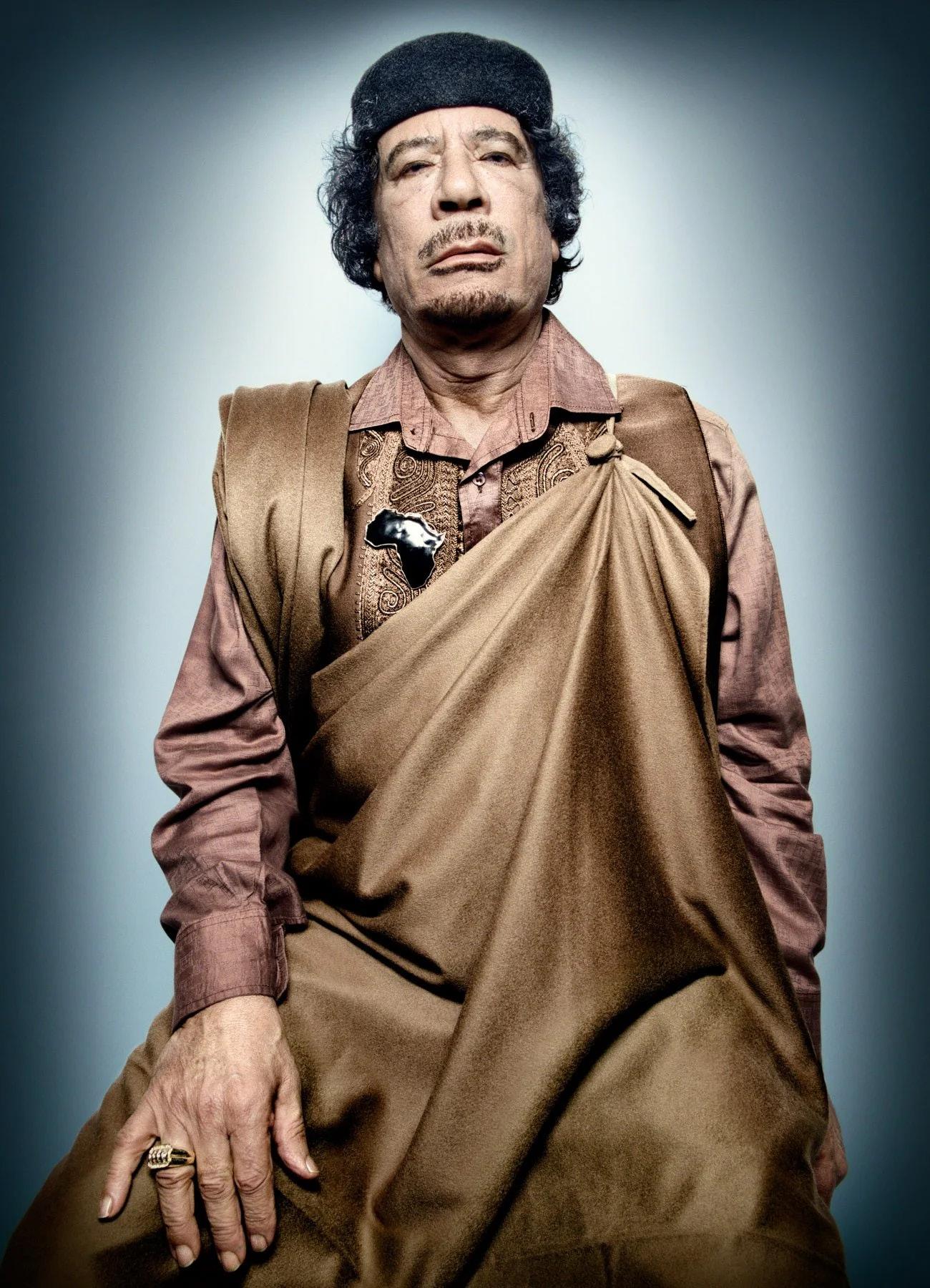
How do you capture world leaders in a way that reflects both their power and its consequences?

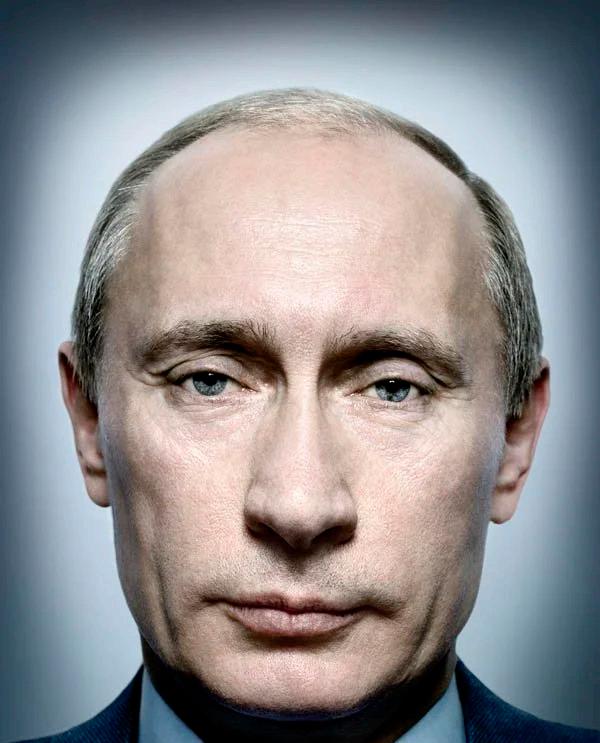
When I was at the UN General Assembly in New York, I built a studio to photograph world leaders. It took 67 meetings with the UN to win them over and let me in. When I began, I had no prior permission from any subject to sit for me, you couldn’t negotiate that in advance.
Once I was in, it was like a street hustle. You go up to a head of state and say, “Excuse me, can I take a picture?” Initially, I had no one sitting for me, but then you get one, then two, and before you know it, momentum starts to build and it turns into a private club that they want to be in.
It turns into, “Oh, there’s this guy taking pictures of the world leaders, we should do that.” Soon enough, people were coming up to me saying, “Excuse me, but our leader has not been invited. Can we pencil in a time tomorrow?” My assistant would be saying, “President of certain country, sure we can fit you in at 3:30. We’re a bit busy before.” It was insane.
At other points, they all came in clusters. I would have ten of them in line waiting to have their picture taken, like they would at school. And of course, while they’re all waiting, they’re having a conversation. It turned into an event.
At one point, Mugabe came to sit for me. He walked in. He was very gentlemanly, very polite, but gave nothing away. He sat down. He was dapper, well put together, with a perfectly done tie. Everything was symmetrical. I take a picture, and it’s like ice.
I looked into his eyes, and they were a crystally blue. It was like this ice soul frozen over. His skin was almost stretched over his face. It almost looked like glass. He stood up, walked
away.
I have this little wooden apple box that everyone sits on. It started off as something anti-fame and power––it’s not a throne or a glamorous chair, it’s just a box. But over time, even the box has become famous because of who sat on it. I’ve been told more world leaders have now sat on that box than on any chair in history.
So, Mugabe walks away, and then another head of state
human rights victims, especially someone who’s been hurt, tortured, or traumatized. So that’s where my head is usually at. It’s not in the broader context at that moment. That moment was a wake-up call.
“Snap out of it man, you’ve got to remember that these guys can be responsible for so much trauma in society,” I often feel that after I’ve finished the picture.
Then, I put the picture back into society for debate, and

comes to sit down, and he sees him walking away.
I said, “Would you like to sit on the box?”
He said, “I will sit for a portrait, but not on that box. There’s blood on it.” That was a chilling moment. Photographing world leaders is incredibly sensitive work. When I’m taking pictures, I’m in a different place––focused on their body language, aware of every detail. Some you’re not even allowed to touch; the Secret Service will arrest you straight away. You have to be physically and emotionally aware of every move––no sudden movements. It’s even more sensitive when we’re photographing
I see how people respond to it.
The picture I took of Putin, he loved. Some of his supporters loved it too, using it as propaganda—it shows him as a tough nationalist. But then something interesting happened: his opponents, particularly the human rights community, also embraced it as a banner against abuse of power. In thousands of demonstrations, people carried flags with his face. So much so that the Russian administration issued a decree: anyone circulating that picture in connection with human rights violations would go to jail. The picture is now officially labelled extremist material.


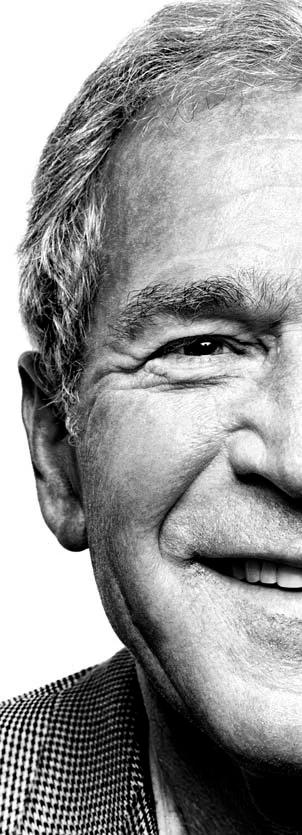
That’s why debate is so important. If I get it right and create an authentic moment with my sitter, everyone will see themselves in that story. My picture of Bill Clinton: his supporters say it’s about charisma—he was a rock and roll president. His critics say it’s about sex and the abuse of women. It’s the same picture. We all see different things depending on who we are. That debate between people—that’s what I want. I don’t want to stop it.
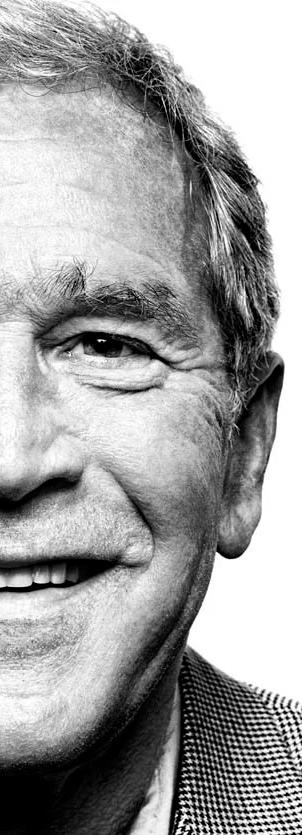
W. Bush was almost aggressive to me the first moment I met him. He had been in office for eight years. We’d had 9/11, Afghanistan, then Iraq. Then, just as he’s getting ready to leave office, when we got the picture, we have an economic meltdown. It really felt like the world was in chaos.
At the same time, you’ve got Obama rising, a black man, breaking barriers in society, referencing Martin Luther King’s dream, and seen as a political Messiah. Obama won and
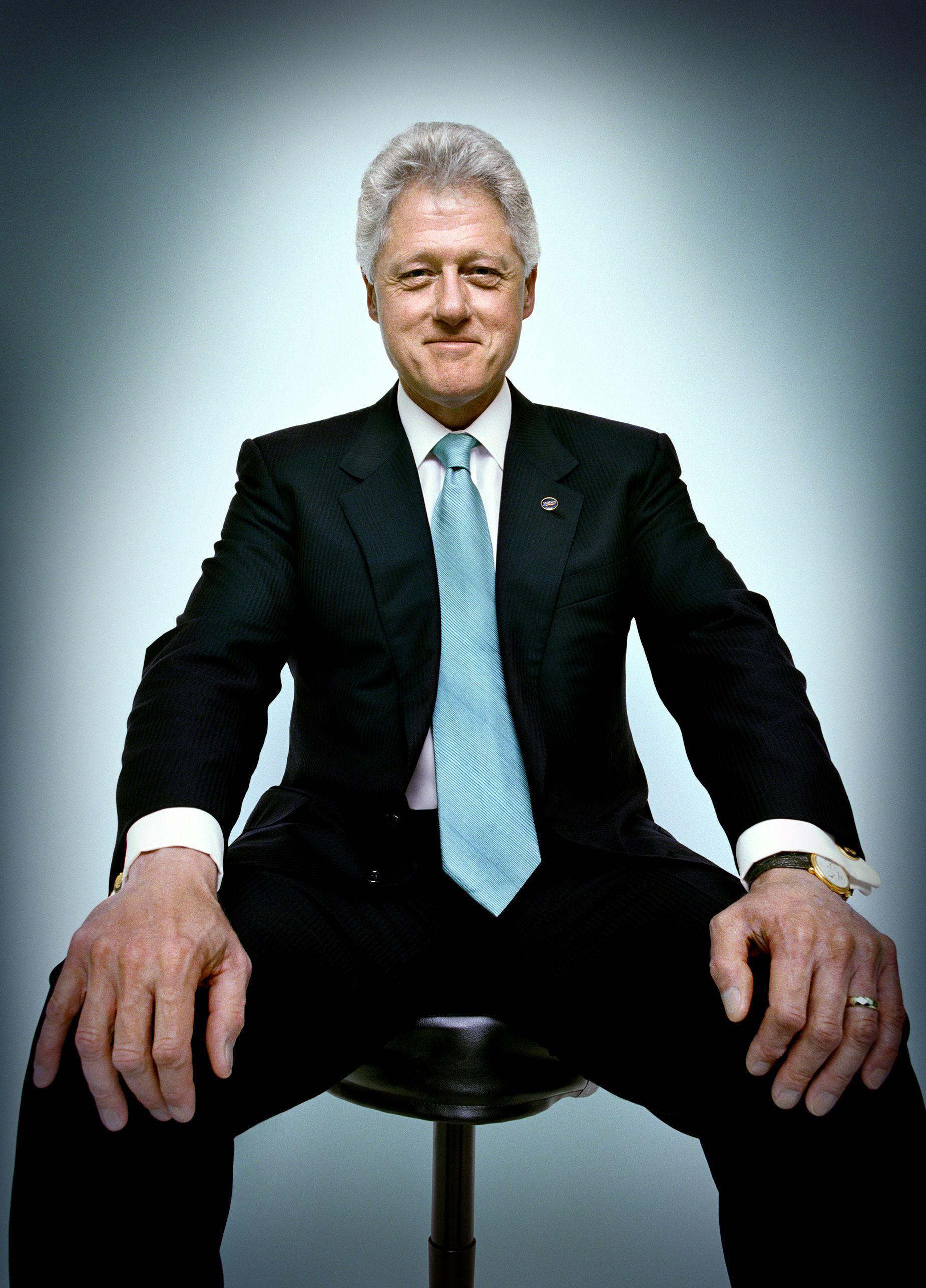
Right now there’s a big discussion about democracy. Democracy comes from two Greek words: “demos,” the people, and “kratos,” power. What’s happening today is we’ve forgotten what democracy actually means—power to the people—and we think it’s about winning the debate. It’s not. It’s about having the debate. The moment we stop debating what our society should be, someone can harness the situation and just do what they want. I’m all for the debate.
Have you ever noticed and captured something unexpected in a world leader?


there was jubilation around the whole world, not just that Obama’s arrived, but that W is gone.
And so, the last thing he wants is to be photographed in that moment of vulnerability, especially with my kind of approach where I’m focusing on his humanity in details. So, in every single picture that I take of him, he puts on a mask and smiles in every shot.
You think of Iraq, the global chaos, the economic crisis––and he’s smiling. Perhaps he’s trying to show that he’s not vulnerable, but the message he was trying to send out was quite inappropriate––he’s smiling considering the state of the world.
After a few years, I got to know Condoleezza Rice really well. She was the first woman of color to be Secretary of State. She broke barriers and was obviously very close to W. I said, “Do you know the picture of W that I took?”
She said, “Yeah, we know it well.”
I told her about my experience with him. How he was very combative yet smiled in every picture. I said, “That was a mask, right?”
She said, “No, that wasn’t a mask. He’s a happy-go-lucky guy. That’s who he really is.”
So the real answer is, I don’t know. It’s a mystery.
The Human Condition is a complete, beautiful, terrifying mystery, and we have little moments where we think we understand.
People might say, I reveal something in people’s character. I’m not sure what I reveal. Is it the truth? How can it be the truth? It might be a true moment. It might be fake. I was there, and I did engage with these people, and they did give me something, and there must be something true in it, because people seem to connect with the pictures afterwards. But it’s a mystical, weird process. It’s not intellectual. It’s completely emotional and even when I do it, I don’t really understand it myself.
In The Defenders, is your work portraiture, activism, or a form of bearing moral witness, particularly in documenting the Mexican border crossings?

the border. But, you can’t block the whole border because it goes through the Solomon desert. So, he left the most dangerous parts [open], thinking no one would cross them, and policed the easier sections.
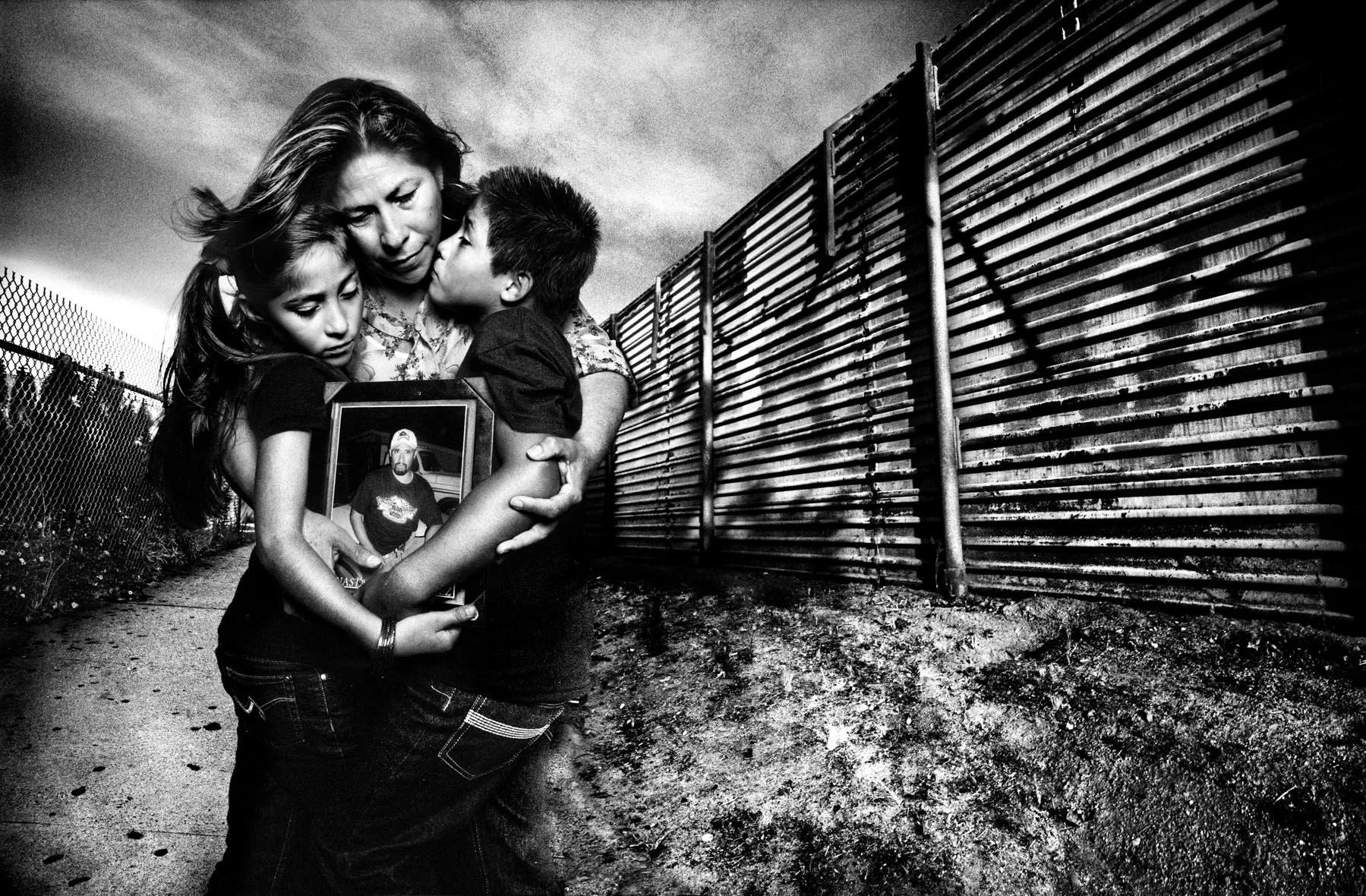
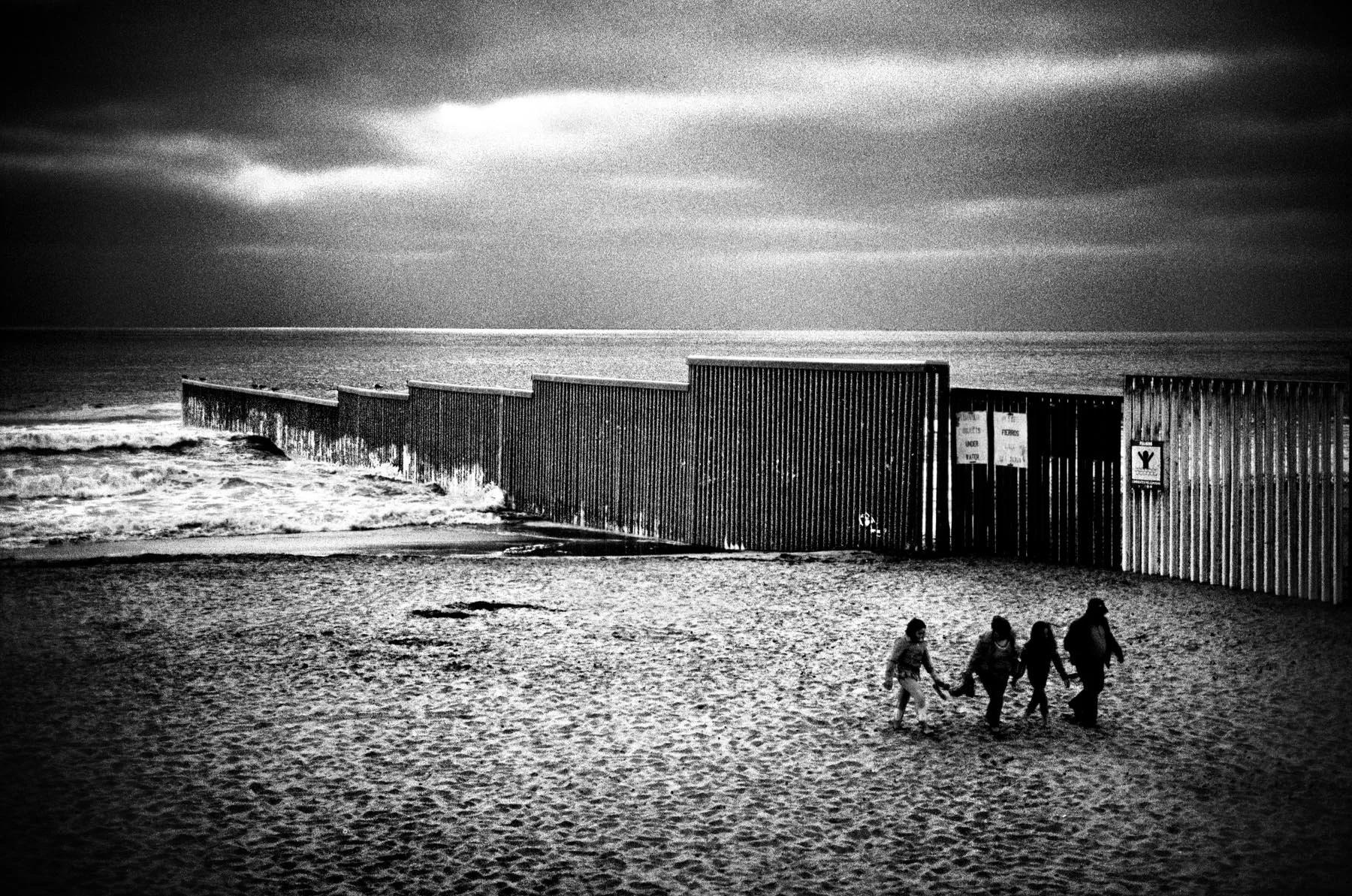
But what [leaders] always underestimate is people’s will to cross the border and have a better life. So suddenly, all those people were now funneling through the most dangerous parts in groups of fifteen or thirty. They were often ill prepared, and it’s 115 degrees in the heat of summer…so many people die of heat exhaustion alone, women and children, not just men. I decided we needed to talk about this during the Obama administration, so I spent a year with Human Rights Watch going back and forth across the border. I went to halfway houses, photographing families who had just been deported back over to the Mexican side, and they were all shell-shocked. They didn’t know what to do.
I stood in a morgue surrounded by 300 bodies of women and children who had all died. Things I could never forget and should never forget. Journalists have always told me there’s a set of rules to be objective. There’s nothing objective about my work.
When I covered the border story, I remember hugging a woman who had just found out her son had died crossing the border. He was 10 years old, and he was crossing the border to be with his mum, who had crossed earlier.
Well, the interesting thing is that these pictures were taken during the Obama era. We automatically assume this is Trumpism with the aggressive look at immigration and the moral crisis under Obama. Because we were all seduced by the Obama dream, we stopped asking what was really happening. There was a crisis at the border. So many people were dying trying to cross it. Before Obama, W. [Bush] had militarized
She was filled with guilt and pain, and she started to cry as I was taking a picture. And I did what a human being does. I put down the bloody camera and gave her a hug. Now I still remember the vibration of her pain going through my body. She made the sound of a wounded animal.
Journalists have said to me, “Well, you broke the rules. That’s not objective”. But I never agreed to be part of those rules.
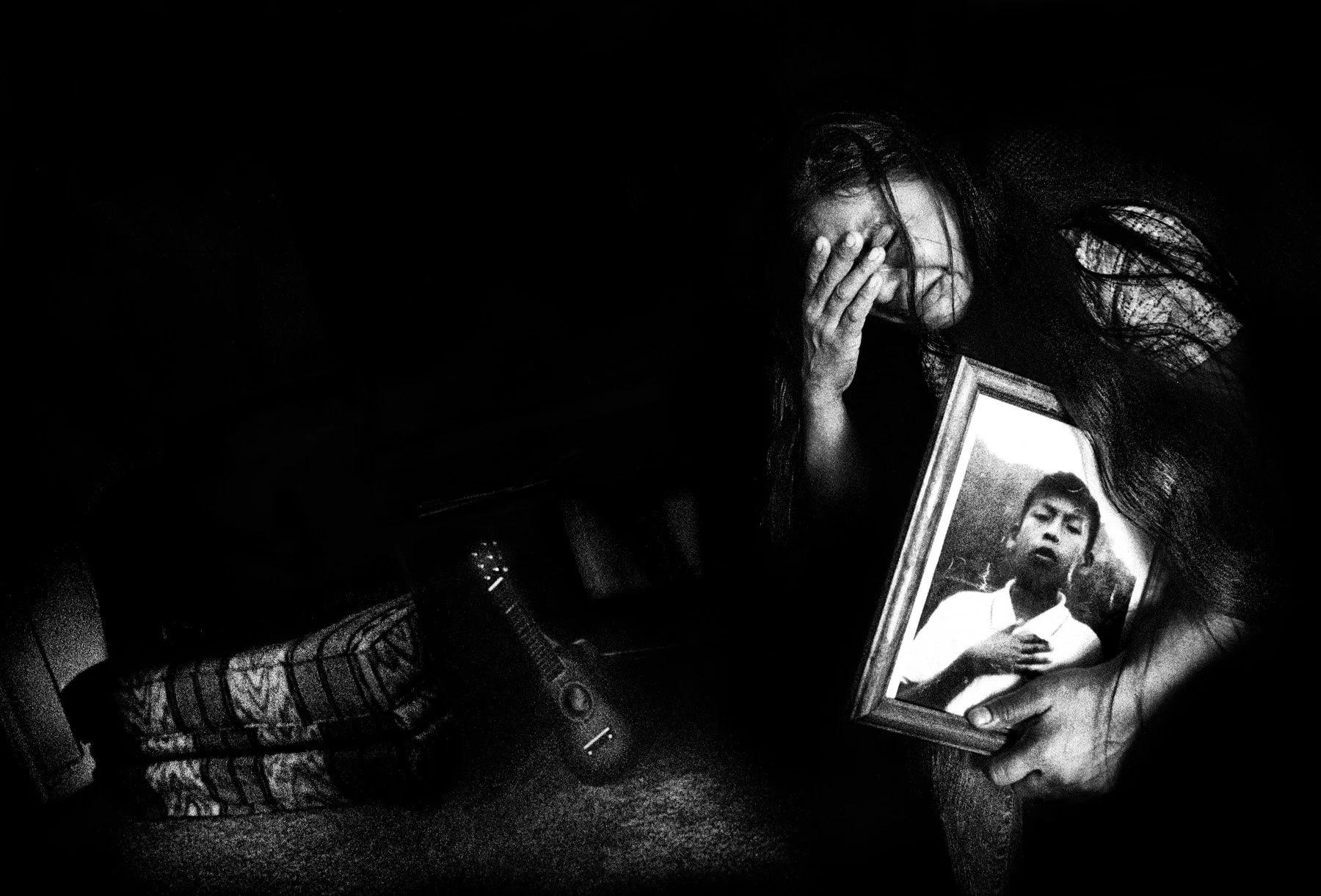
I’m a human being, and I’m an artist, and I get to do what I want. For me, this is a collaboration. I’m not observing from a safe distance. I’m working with my subject to amplify their story, and that means I have to earn their trust. I’m asking for a lot, but if they give me their trust, then I will do my side of the bargain. I will deliver their story to as many people as I can. It’s a human story and I’m involved with it.
So, I’m not sure. I don’t think I’m a journalist, and I don’t think I’m a historian, because I live in the present. All my pictures are 1/500th of a second. It doesn’t get more present than that. I think I’m a storyteller, and that means I do it my own way.
I worked with Presidents after that. But how can I look into a President’s eyes now and just see glamor, power, fame, and success? How dare I think that? I see nothing but responsibility––on the President’s shoulders and on mine. If I’m photographing the man who carries so much responsibility, then I’ve also got responsibility on my side.
Now when I meet a President, it’s like, “Hey, you better get this right.” I know––your fame, your power, that’s all cool. But, man, you are responsible for so many people.
Given all of that, what still gives you hope? Why do you keep picking up the camera?
Because I’ve seen people in the worst circumstances. They are really kind and compassionate with each other. We

have a privileged life and we’re all in danger of becoming bitter and cynical. It’s all a question of comparison and perspective.
I photographed a 16-year-old girl named Esther. She’s from the Congo, and I photographed her in a hospital. She had a baby on her lap––a beautiful, little baby boy called Josue.
And I said, “Would you mind telling me your story?”
She said, “When I was fourteen, I was fetching water for my parents in a rural area. A gang of militia gangsters took me, captured me, kidnapped me, and took me to their base camp in the forest. She said they tied me to a tree, and forty men raped me for four days. Then, the ropes came undone, and I escaped. I went to a village. A man rescued me from the streets and took me to his home to rest, and then he raped me.”
Eventually, he discarded her because he was finished with her, and she walked for days to get to this hospital because she had heard that there was a doctor there who heals women and children who are survivors of sexual violence.
She was operated on. Her injuries were quite severe, but they fixed her body up, and then they found that she was pregnant from the rape. Then I looked down at her baby, and I realized her baby was born from rape. I have a daughter, and my daughter was the same age as this girl. I started crying. I’d never heard of a story so tragic.
I go to take a picture, and she’s not crying. She has this radiant, compassionate look on her face. It is dignity personified. And I put down the camera, and I said, “With great respect, I’m a middle-aged man who lives in a privileged world. I’m a mess with emotions, and I look at you, and you are not even cry-
ing. How can you tell me the story, and I don’t see the same emotion in you that I’m feeling?”
She said, “the reason I don’t cry in your picture is because I don’t want to make you feel sad. I don’t want anyone to feel sad when they look at a picture of me.”
She said, “My mommy and daddy told me that I was put on this earth to bring joy to the world and I will keep my promise.”
Now, that is a proper leader. She’s been through hell, and she will continue through hell. She has a very uncertain future, and she cares about me, she cares about you, and all the strangers who are going to look at that picture of her. She wants to radiate a moment of optimism.
That’s what optimism is. You find out when you go to the world’s darkest corners. You see the truest of hearts.

“She has a very uncertain future, and she cares about me, she cares about you, and all the strangers who are going to look at that picture of her. She wants to radiate a moment of optimism.”
I see more cynicism in the privileged side of life than I do in the dark side of life. I feel very privileged to have told these people’s stories. Esther was right to radiate confidence, compassion, power, leadership. Because that goes through me, and it goes through you.
And then if someone reads your story, and is feeling a little lost that day, it will go to them.
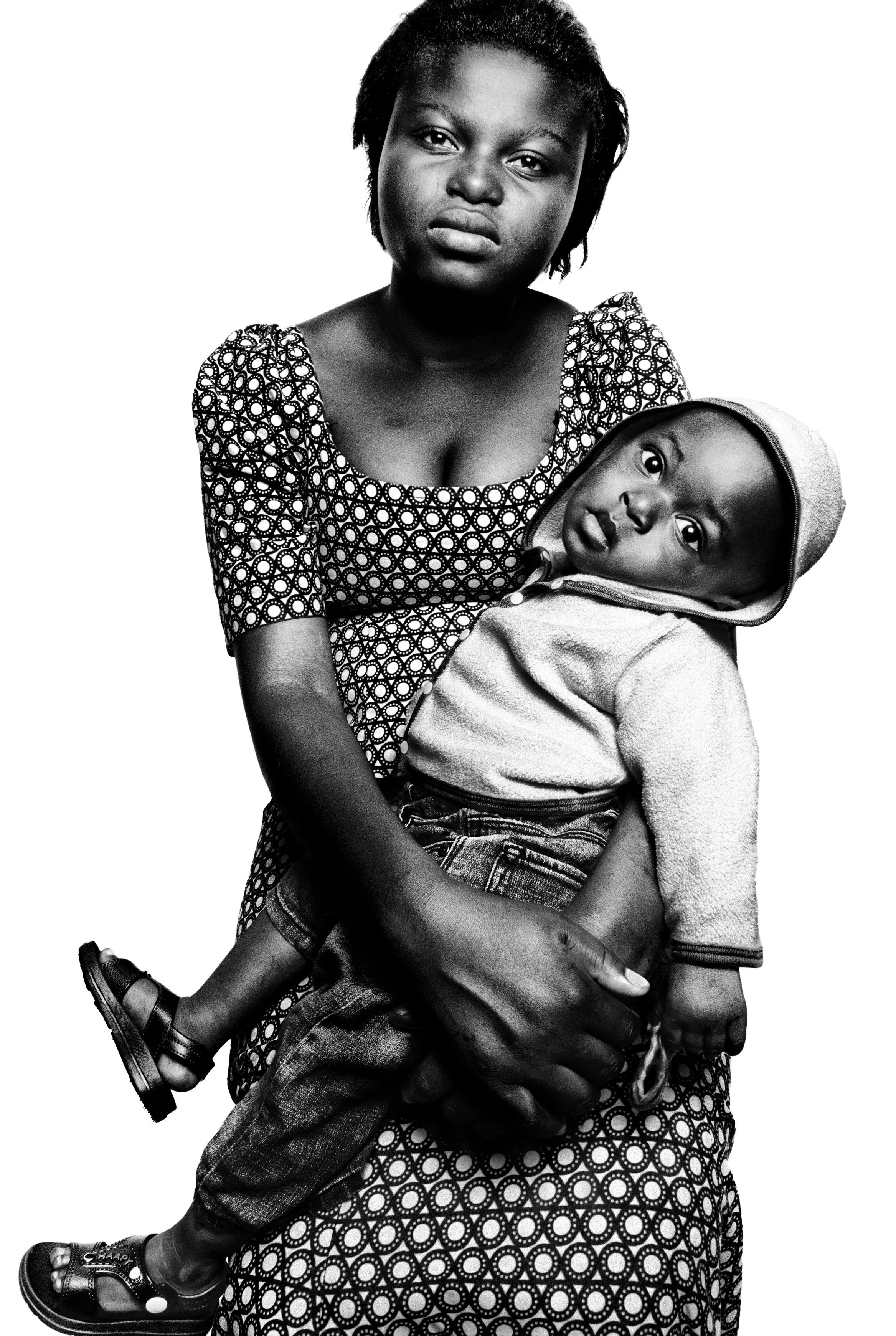

BY HANNA KLINGBEIL CANALE
When I set out to create this piece, I thought I would be writing about the development of extreme air sports in a small region in the southern State of Mexico. Only after I started conversing with the pilots and locals did I realize I was actually writing a love story.
In El Peñón, a mountainous site located in a hidden nook in the southern municipality of the State of Mexico called Temascaltepec, free flight—an umbrella term for air sports including paragliding and hang gliding—is not just a relief valve for adrenaline-seeking daredevils. Free flight is a way of life: one with distinct values and perspectives, one that shapes identity, and even one that forges new paths in both professional and personal spheres.
Pilots and locals of El Peñón described free flight as a journey of discovery and unconditional surrender; an account of tragedy and fear; a chronicle of thrilling moments; a tale marked by trust, and, most importantly, transformation.
Originally from Argentina, Alejo Idoyaga Molina visited Valle de Bravo, a town next to Temascaltepec, after moving to Mexico as an expat. 14 years ago, he took paragliding lessons out of lingering curiosity and a desire for adventure, but his life changed after his first solo flight. Later, his 12-year-old son also learned to fly.
“I don’t know how to live without flying,” he told me. His son, Benjamin, echoed the same feeling, describing his relationship with paragliding as one that has allowed him to connect with his new community and the environment while giving him an acute sense of responsibility.
Alejandra Canale Lebrija, a resident of Mexico City, started paragliding 15 years ago. The sport, she said, has become an integral part of her identity, elevating her self-esteem and giving her a sense of belonging.
When I asked her what paragliding meant to her, she responded with a smile, “Feeling like you’re in control of your decisions and emotions, but at the same time having to let go of that control and trust that everything will be okay.”
Miguel Gutiérrez, co-founder of Alas del Hombre, a flight school and business offering tandem flights for tourists, and co-director of the Monarca Paragliding Open, an annual competition in Valle de Bravo, comes from a family of pilots. Dreaming of being able to free fly in his home country, Gutiérrez brought the hang glider to Mexico in 1987 from California— the birthplace of the modern hang glider— where he began fabricating them as a teen. Paragliding followed the creation of the hang glider and was considered a simpler version of the original aircraft.
Temascaltepec is situated near the town of Valle de Bravo, a popular tourist destination and modern vacation spot for Mexico City residents. Free flight is also practiced in the town’s surrounding mountains, such as Monte Alto, which overlooks the beautiful lake and valleys. However, El Peñón, a beckoning rock formation nestled in a small corner of Temascaltepec, is the true free flight heaven.
Alejandro Blázquez de Nicolás, a seasoned paragliding pilot, researched and directed his own movie in 2022, Caballero Águila, inspired by the flying community of El Peñón and the triumphs of local pilots Paty García and José Luis Jaramillo.
“El Peñón in Temascaltepec is a free flight site as well as an agricultural and mining community with several unique characteristics. Thanks to its orography, the area offers ideal meteorological conditions for air sports, with winds that blow consistently—primarily from the south—almost 365 days a year. This unique condition makes it a paradise for those who practice the sport,” he explained.
According to Blázquez, a group
ulates free flight in El Peñón. It establishes rules to ensure the safety of the pilots and charges fees to fund its operation. To fly in El Peñón, seasonal or membership passes need to be bought through the club.
Maxime Legaignoux, the director of The Club Peñon, explained that the organization rents the takeoff and landing strips from the ejidos (local communities of Temascaltepec) that are part of the park. The Club Peñon also helps support the maintenance of the park and access roads. Most of their employees are Temascaltepec locals.
The community of El Peñón, Temascaltepec, is primarily rural and agrarian, and the surrounding mining excavations are home to a population of likely Matlatzinca indigenous origin.
“The Matlatzinca people are very interesting because they are a hardworking and fierce community—warriors who were never conquered, neither by the Spaniards nor by the Aztecs. In fact, the Aztecs used them as mercenaries in their own conquests. Because of these cultural traits, they are a proud people—strong-willed, combative, and reserved––yet with a good heart. Most
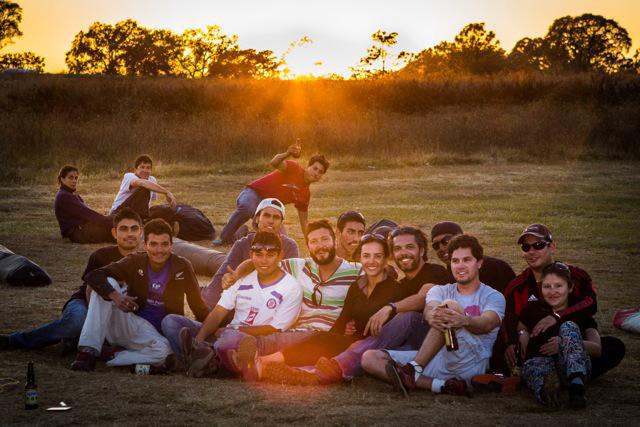
of flight pioneers prepared the launch site forty years ago, and, since then, the sport’s presence has grown steadily to the point at which athletes now visit daily. Gutiérrez explained that every winter, over 300 pilots from Canada, the United States, and Europe visit Temascaltepec due to the ideal and consistent flying conditions the site offers.
However, free flight in El Peñón does not go unchecked. The Club Peñon is a paragliding and hang gliding club that reg-
importantly, they were born from the dream of flight and the universal human desire to live fully,” Blázquez stated.
The living conditions of Temascaltepec make life challenging for its inhabitants: Temascaltepec and the greater southern Mexico state region face widespread poverty. The Mexican government reported that in 2020, 49% of the population was living in moderate poverty, and 13.4% was living in extreme poverty. Only 15% of the pop-
ulation has achieved a high school diploma. Blázquez explained that the region has been susceptible to the influences of organized crime and drug trafficking.

Over the past 40 years, free flight has helped transform the community of El Peñón in Temascaltepec—shaping its cultural landscape, redefining its social fabric, and contributing meaningfully to both human and economic development.
“Children from the community gradually began approaching the pilots and their sport, forming relationships of friendship, trust, and mutual understanding. After 40 years of building this bond, the extended community now includes instructors, athletes, entrepreneurs, restaurant owners, service providers, and dear friends who live, work, and grow together in this environment,” Blázquez explained.
The Monarca Paragliding Open is organized by Gutiérrez and his wife. An iconic competition, the Monarca Open attracts hundreds of pilots, stimulating the local economy by garnering foreign investment and sparking consump-
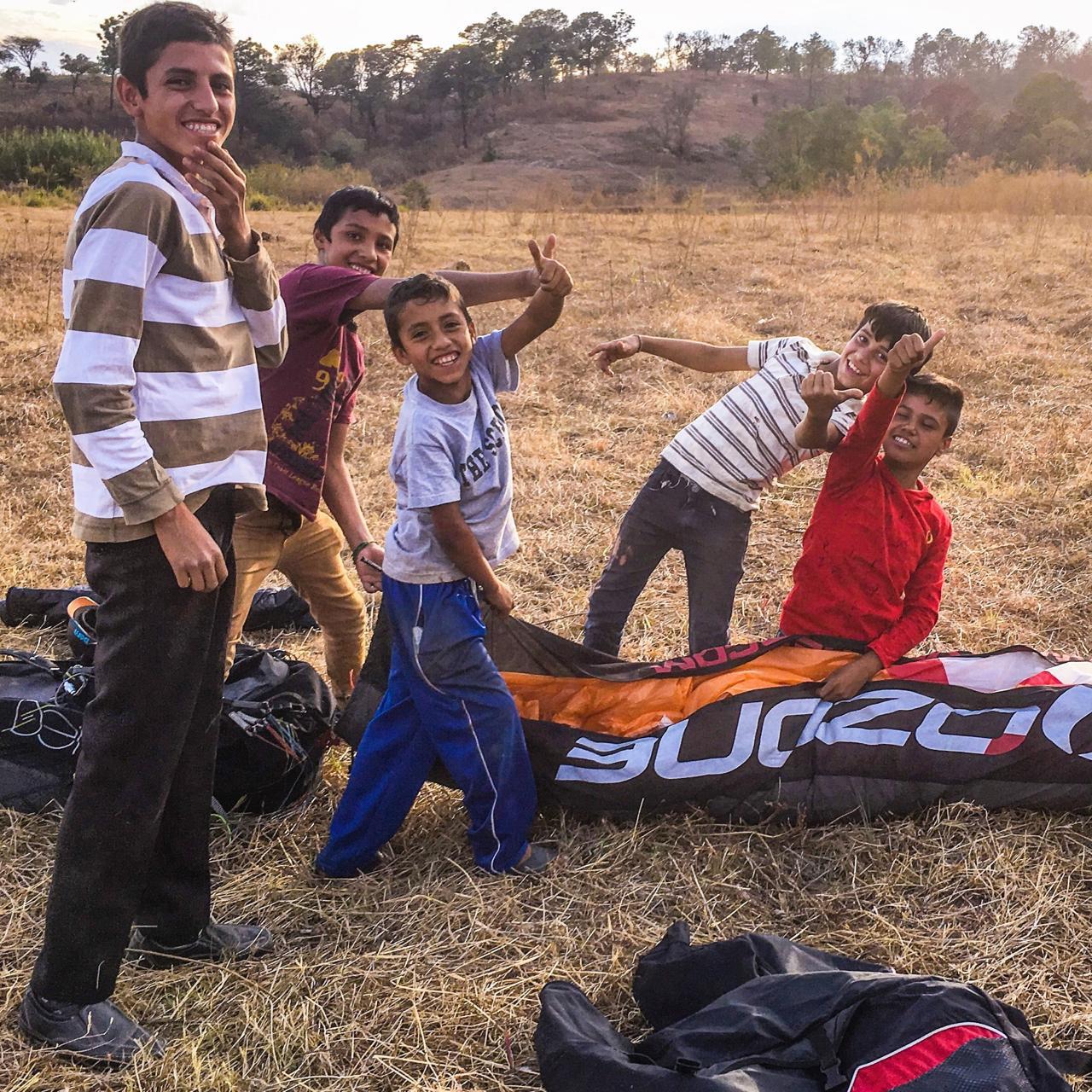
tion.
Gutiérrez explained that the competition helps businesses such as local hotels, taxi drivers, and restaurants for the entire winter season as pilots seek to stay to train for as long as possible. Many locals also offer services independently, such as transportation, as well as medical and logistical aid. Due to the event’s magnitude, the Mexican state government also supports the event by providing security.
Rudy Gotes, a former hang gliding world champion who learned to fly at the age of 11, comes from a family of pioneering pilots. As a world-renowned pilot, he turned the heads of the executives at Wills Wing, one of the four major international hang glider production companies. Wills Wing, based in California, offered Rudy the opportunity to keep the brand while shifting hang glider production to Mexico. He chose to bring the company to Valle de Bravo. Wills Wings has created new economic opportunities for the local community and further solidified Temascaltepec and Valle de Bravo’s international primacy in air sports.
“Everything is produced in Mexico. We try to bring Mexican colors and as much young energy as possible,” Gotes told me. He explained that the same local youth whom he taught to fly in El Peñón years ago now works at Wills Wing.
Air sports not only attract foreigners and support the local economy but also create opportunities for cultural exchange between foreign pilots and locals. Gustavo Lozano, who learned to paraglide at the age of 52, is a proud member of El Peñón’s pilot community. He stated that these meaningful interactions have empowered the local youth to learn English and pursue activities surrounding air sports, as it has provided a lucrative industry full of promising opportunities.
The benefits of air sports in the region extend far beyond the winter season. Local women sell food and drinks at the El Peñón hangar daily, and the four flight schools and tourist experience providers that operate in El Peñón’s park also employ members of the local community of Temascaltepec.
According to Andrés Pérez, a pilot with over 22 years of experience and a member of the community, more than 50 people operate tandem flights with clients in Valle de Bravo’s Monte Alto tower, and around 20 do so in El Peñón. This has improved their quality of life by helping them earn extra income.
Ricardo Gómez Palacio, another passionate pilot and founder of the Club Peñon, stated, “Valle de Bravo is known as a hub for free flight. If you went to Valle as a tourist, the first thing people will ask when you get back is whether you went paraglid-
ing.”
Additionally, the social cohesion that has developed between the pilots and the Temascaltepec youth, known as Los Niños del Peñón, has had transformative effects. The opportunities that air sports offer for the community have galvanized the young locals to seek college degrees, many studying geology, agriculture, and other general fields of study, such as engineering. Many pilots, including Eduardo Canale Lebrija, have supported the local community by supporting college tuition, transportation to school, and even job placement.
I sat down with a group of young pilots, all taught by free flight Valle de Bravo local instructor and legend Alfredo ‘Potro’ Tello, and asked them about their free flight experiences.
15-year-old Aldo Geovanni Hernández Cruz has lived in El Peñón all his life and was introduced to the free flight world through his mother, who worked in the restaurant at El Peñón’s landing strip. At ten years old, Potro taught him how to fly. Misael Plata Jaramillo had a similar experience: as a young child, he liked packing up the equipment and gradually became close with the pilots, ultimately learning to fly under the guidance of Potro.
Misael detailed the positive effects that free flight has brought to his community: “There are new employment opportunities as more pilots come to work here…El Peñón is the most important tourist point of all of Temascaltepec.” Although paragliding does not provide him and his family with complete economic support, he does gain a profit from flying tandem and commercial flights.
Twenty-one-year-old Oliverio Ja-
ramillo Jaramillo is a deaf yet skilled pilot. Oliverio first took to the skies at 14 under the guidance of Potro. For him, flying is, as he expressed, “pure joy.” He flies tandem, which entails mastering piloting without conventional spoken communication. These commercial flights have helped him earn a living. The pilot community has rallied around him as well, supporting his journey by offering him specialized pilot training and hearing aids.
Pilots from the local community of El Peñón who learned to fly from an early age have also reached international success, becoming masters of the air. José Luis “Cloch” Jaramillo, born and raised in Temascaltepec, won the World Championship of Hang Gliding in 2015 in the sports category.
“It has become hereditary,” Benjamin Idoyaga Molina, one of the young pilots, joked. He’s right— the children of pilots of El Peñón learn to fly as early as ten years old. ***
Still, the community faces other challenges: uncontrolled logging and annual wildfires in Valle de Bravo and Temascaltepec are raising concerns about the safety and environmental conditions of El Peñon. The effects of climate change and pollution have impacted all of the State of Mexico, putting entire livelihoods at risk, especially in communities like those of Temascaltepec.
The pilots who fly in El Peñon also feel a sense of responsibility for preserving the place that allows them to fly. They are ecologically conscious—perhaps due to the nature of their sport—as they seek to protect green zones, report wildfires, and reduce their waste. However, Gustavo Lozano be-
lieves that this “ecological consciousness” has not been fully translated into better and more proactive care and use of natural resources.
“We need to find more ways to protect our natural resources,” Canale said. Carlos Umaña, another local pilot, agreed. He said, “There are good intentions with little action.”
Still, there are some who are mobilizing around this issue. To combat these environmental issues, Legaignoux stated that the Club Peñon works closely with ProBosque, a government agency, pursuing reforestation projects and other initiatives that protect the park. The Monarca Paragliding Open has also shifted to more environmentally friendly practices, according to Gutiérrez. They have worked to create firewalls, ban plastic water bottles, and also partner with ProBosque.
Overall, air sports tourism has transformed the economy and culture of Temascaltepec, while raising important questions surrounding environmental conservation and eco-friendly practices. At the same time, these changes have left the community susceptible to other arising problems. Gentrification—the rise of land and home prices due to an influx of wealthier foreigners moving and operating in the area—has been a recent development.
“Four companies are operating at the Peñón takeoff site as schools and tourist-experience providers…It is also true that this relationship has generated a gentrification effect, impacting local land values. Territorial development is affected by these changes,” Blázquez explained.
Enrique Cuevas elaborated on the negative effects that surface from the com-
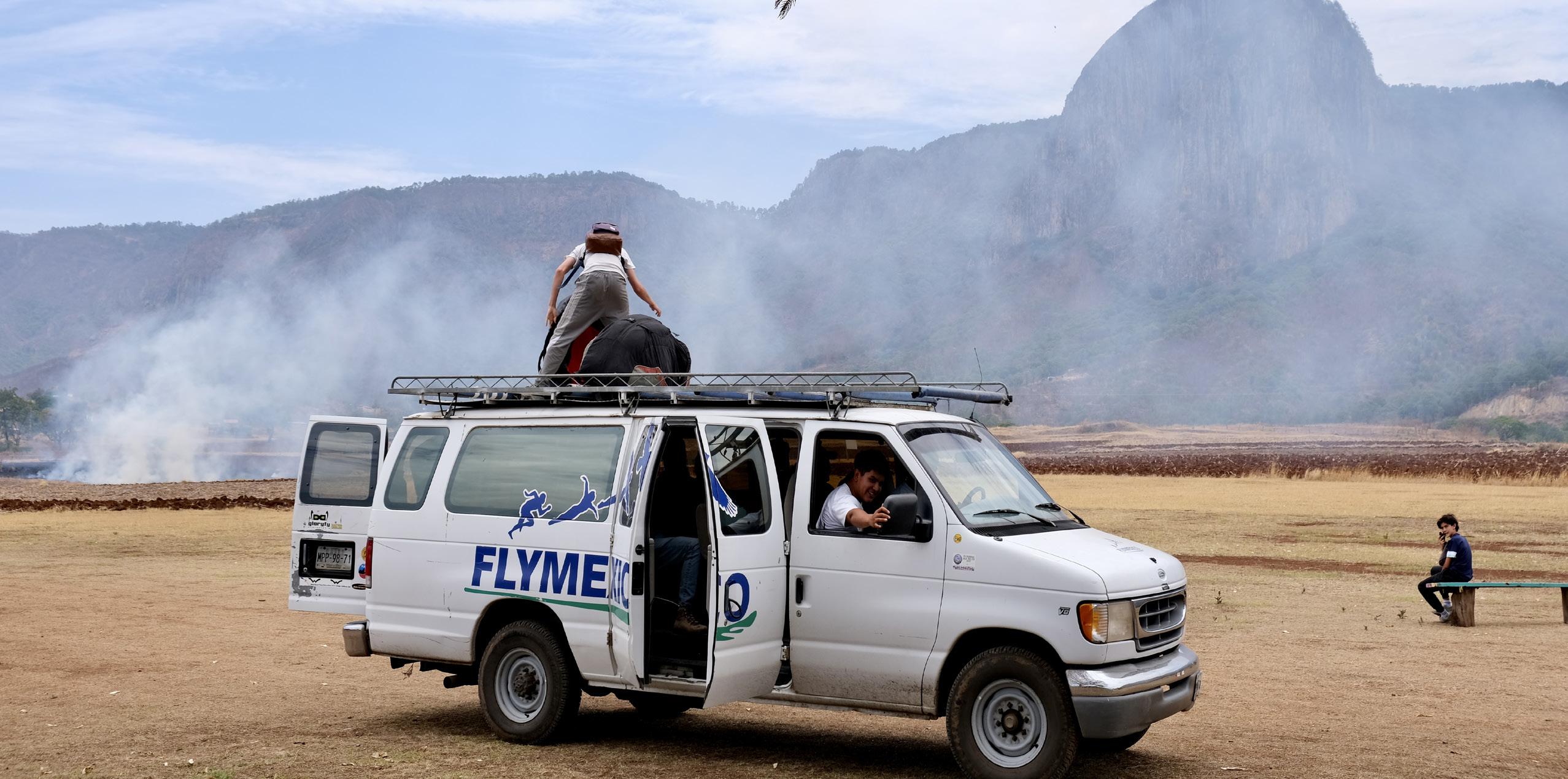
petition between free flight providers, “The businesses that have proliferated are the pilots who offer tandem flights, but there are so many that they end up cannibalizing each other’s clients and lowering their prices. The number of flight schools has also increased, but graduates do not have much continuity with the sport.”
Free flight’s presence in the industry seems like a double-edged sword: perhaps these current challenges are signs of the economic potential of Temascaltepec on the aggregate level; Cuevas describes what many consider as inevitable economic processes within growing markets.
Another significant yet overlooked obstacle is the affordability of flying, limiting entry to the growing industry. For the Temascaltepec youth, flight gear and lessons are extremely expensive. Legaignoux, the president of The Club Peñon, hopes that in the future the Club can provide financial assistance to train local pilots by pursuing different fundraising plans.
Overall, the Temascaltepec community, despite facing persistent problems, embodies a fighting spirit. In a community centered around flying, adversity is perceived not just as a surmountable obstacle, but a path that leads to a whole world of opportunities in places where human limits are usually encountered. In El Peñón, scaling a mountain is not a torturous and grueling feat; rather, it is a rewarding climb, one that is certainly not done alone.
When I visited the hangar, I noticed a sweet current of air passing through, rustling the yellow fields and guiding the pilots
“The Matlatzinca people are very interesting because they are a hardworking and fierce community— warriors who were never conquered, neither by the Spaniards nor by the Aztecs. In fact, the Aztecs used them as mercenaries in their own conquests. Because of these cultural traits, they are a proud people—strong-willed, combative, and reserved—yet with a good heart. Most importantly, they were born from the dream of flight and the universal human desire to live fully.”
As an outsider looking in, I always believed this community knew something that I could never comprehend. Every smiling glance, every bellowing fit of laughter, every clink of beers suggested a secret understanding only privy to them. Perhaps, I thought, being part of the small percentage of human beings capable of flying opened up a world of sensations and knowledge, one that could only be truly understood so far from the ground, with a singular piece of cloth separating the two earthly realms. Now, I realize that this secret understanding was not solely limited to the pilots. Whether you were up in the clouds, packing up the equipment, driving gear up and down the mountain, or selling quesadillas, you understood it. Every interaction surged with energy, and every person held an indispensable role. This was not just a community but rather a thriving ecosystem.
Places like this remind us about the spirit of synergy and the importance of community. Achieving this does not necessarily require jumping off mountains—rather, it involves a commitment to the people who surround us, and an understanding that the joy we derive from places, individuals, and activities can be shared and even multiplied through acts of benevolence, friendship, and respect. This is the true love story. It’s one thing to be able to fly. It’s another to tell someone else that they can too—that you believe in them and that you can help them learn. That nothing is impossible. And sometimes, that act alone is what lifts us most of all.
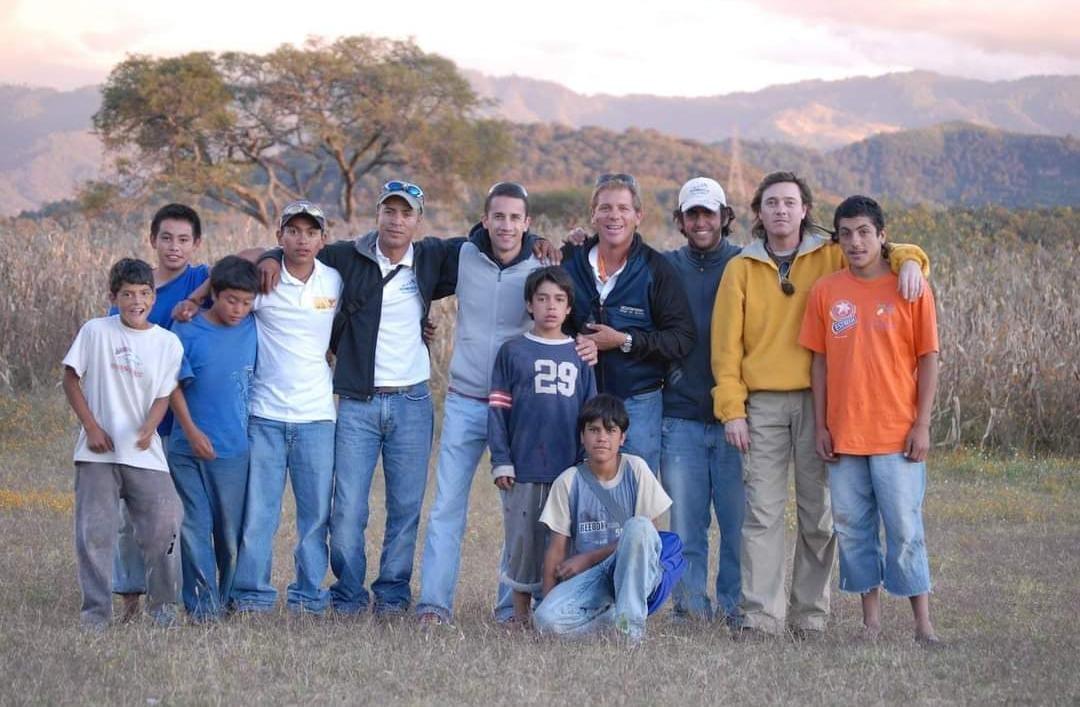
“Nobody took it seriously, until it became serious.”

